October 17, 2021
Martha O'Kennon
Rain. Little bit of sun. Rain. etc. What can I say about the past week and the one before it? Well, for starts, what was I expecting in mid-October? It's a lot cooler now too.
The Euonymus is reddening, or as we used to say, redding up. The Dogwood leaves have gone from solid green to shades of red and blue on green. And in the back the cultivated Phlox has a couple of purplish flowers.
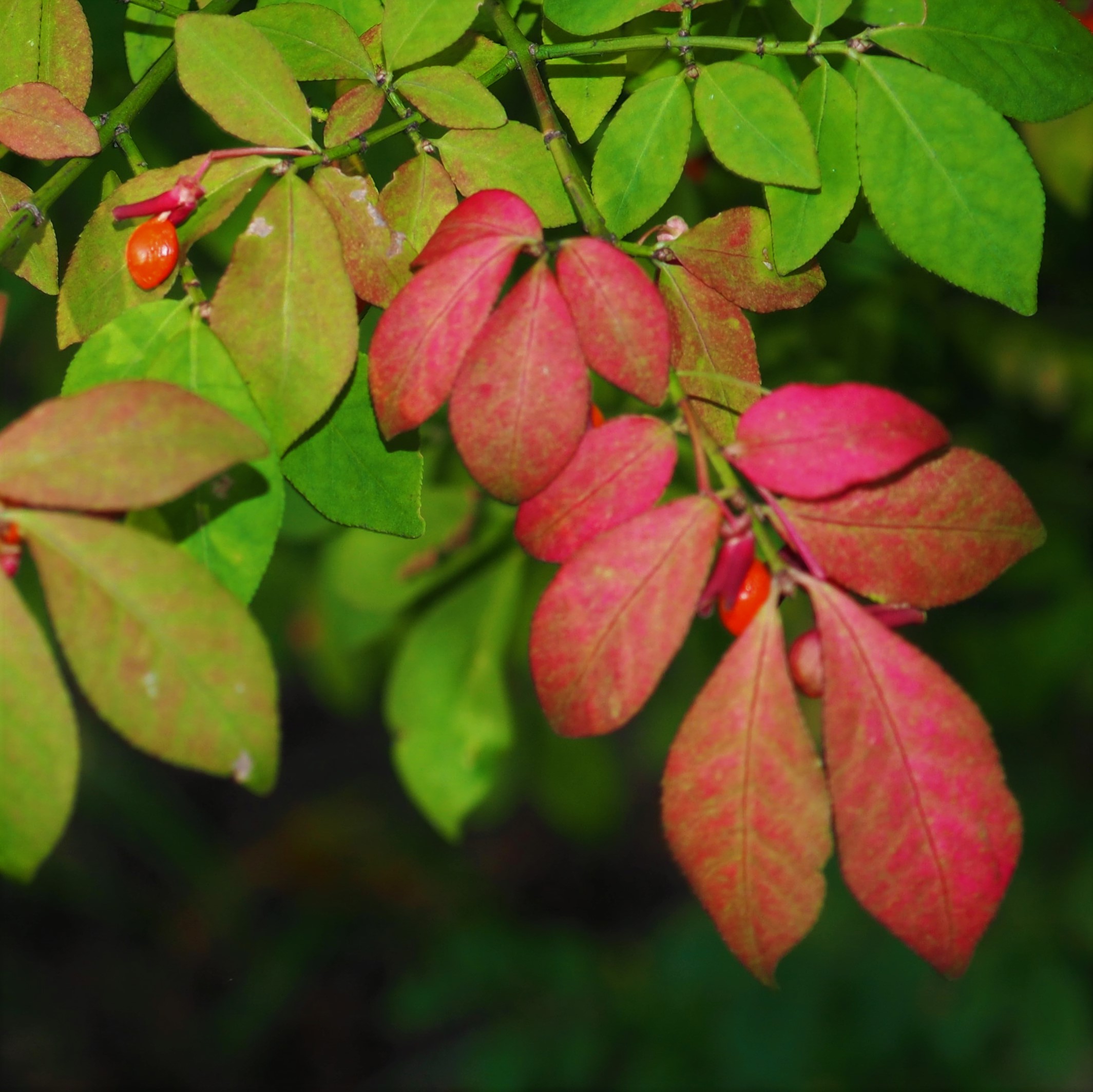
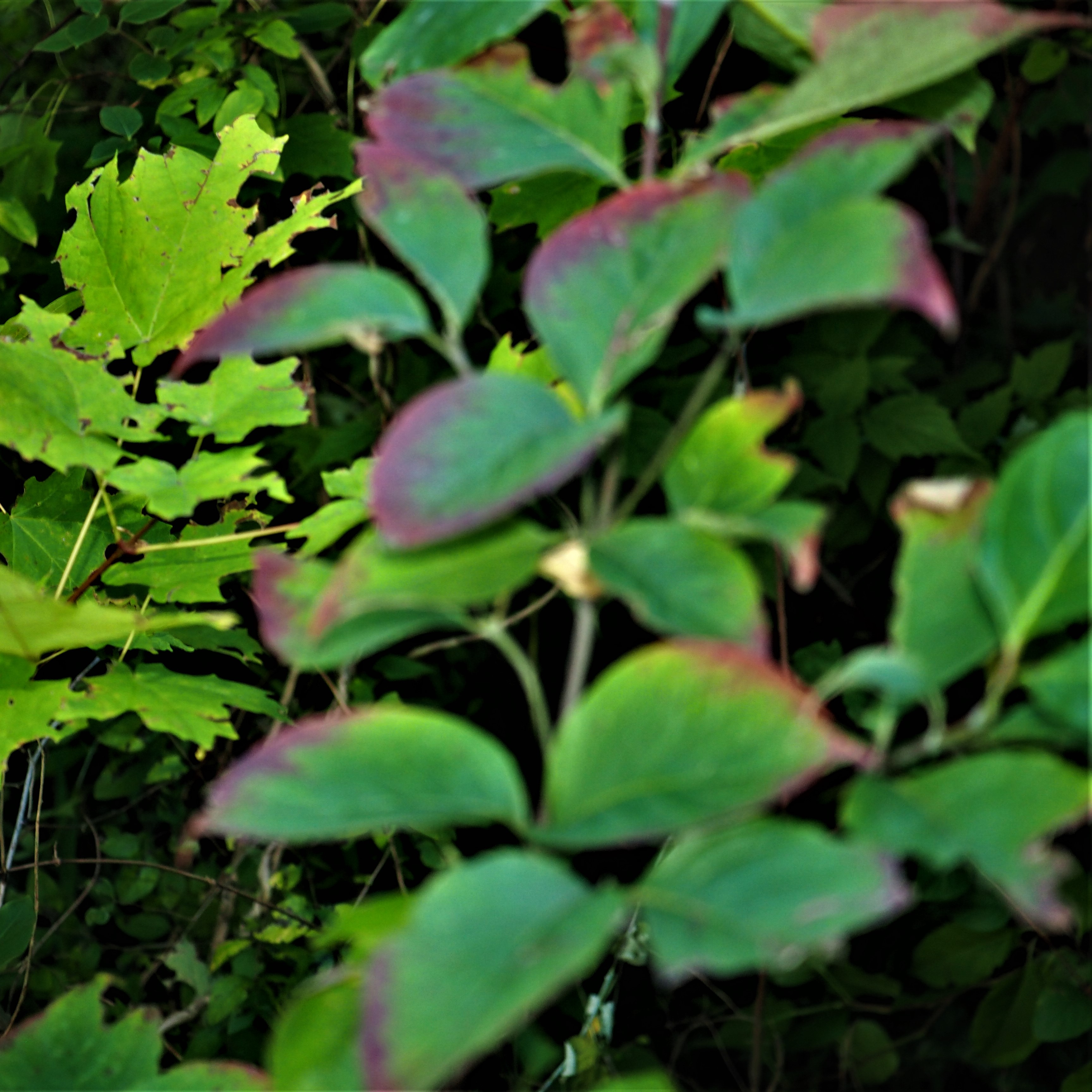
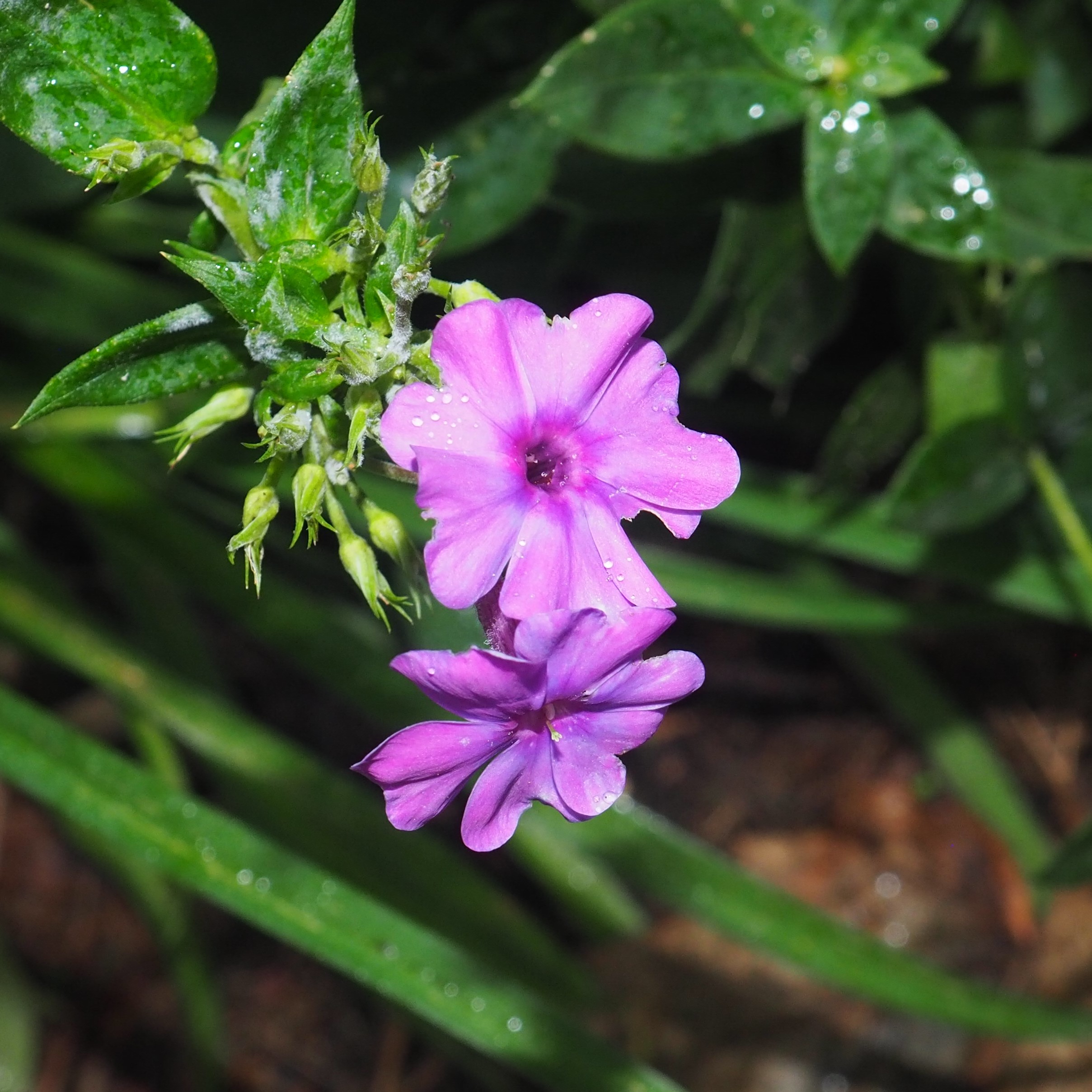
Remember that there is information in the name of the file for each image. You can see it by mousing over the
image - look at the lower left of the screen. Or you can click on the image to get to the (usually) larger image.
Then the info is displayed in the address line above. Sometimes the second click will actually display a
different view of the original image.
The Ants continue to wind down. Here is one of our Eastern Black Carpenter Ants. It looks as if its face is elongated into a sort of Halloween mask, but now I think that is a prey item it's carrying along. The only really easy Ant to find is the Small Honey Ant, which runs around on the North Wall and on top of the Redbud leaves.
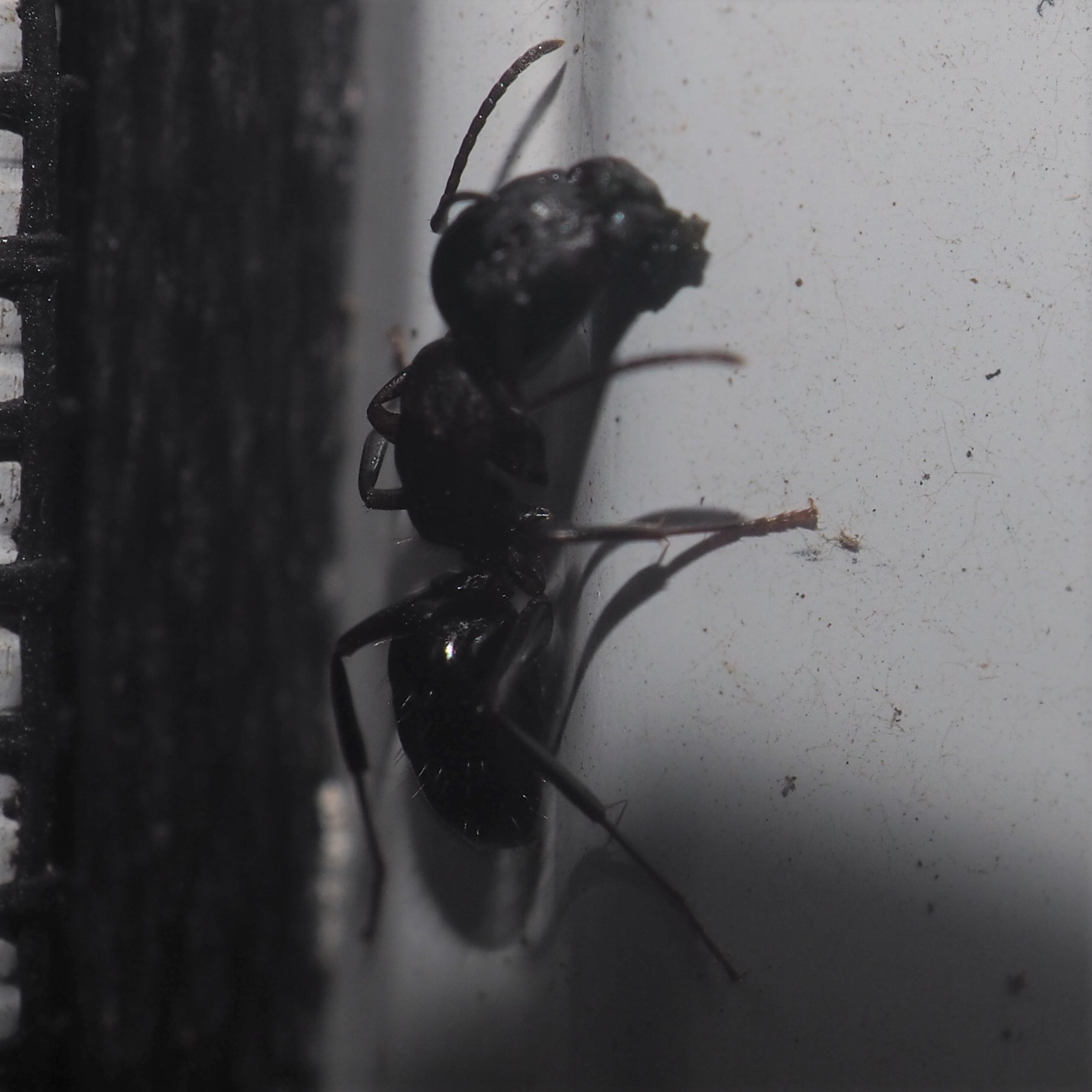
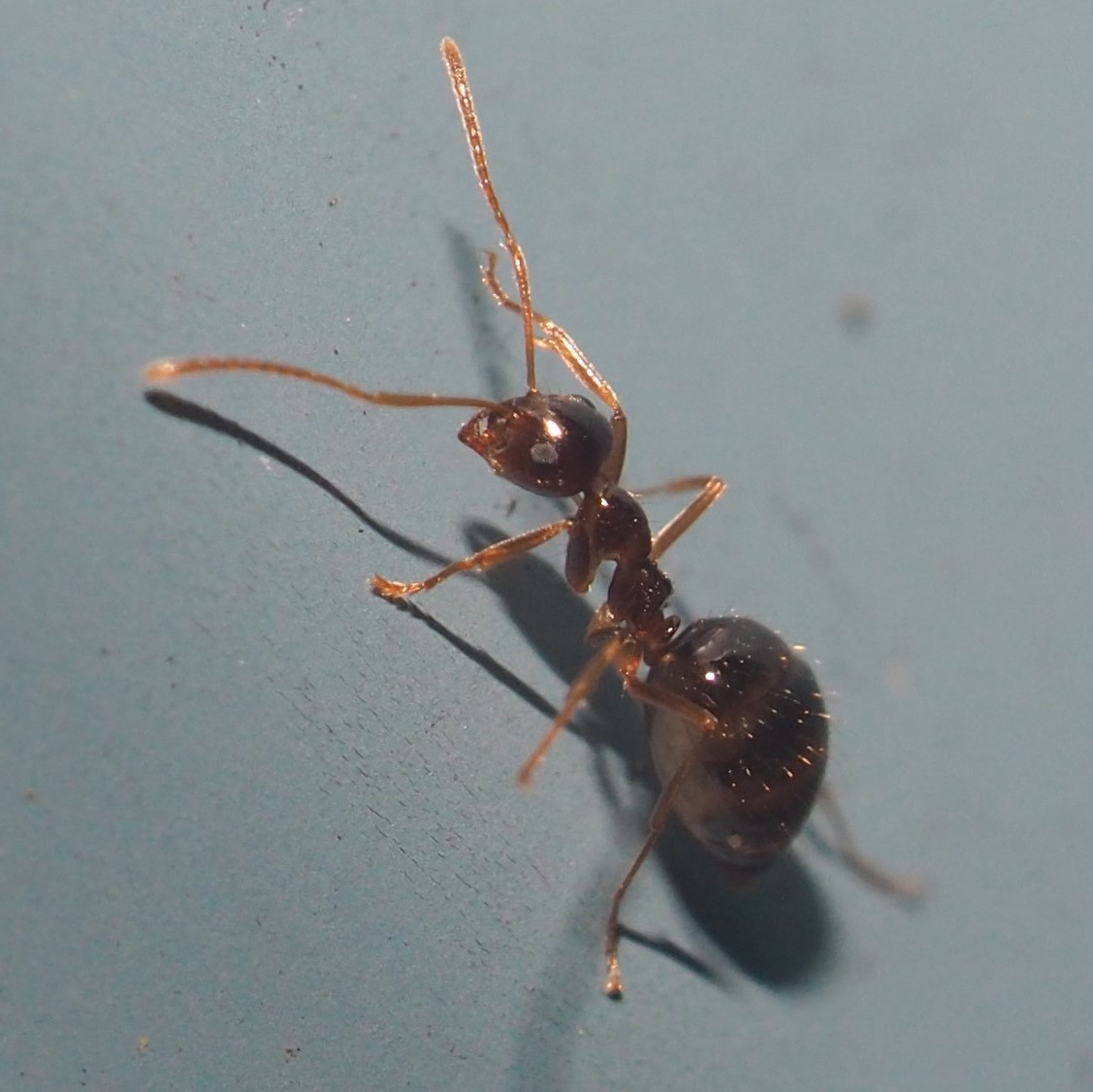
Nowadays, when we look at the South wall, it is easier and easier to find a Bagworm (really the larva of a kind of Moth). They creep up and down the shop siding mostly enclosed in a handy warm bag, but with tiny feet that inch their way around. I think the bagworm in picture 3 is different from those in pictures 1 and 2.
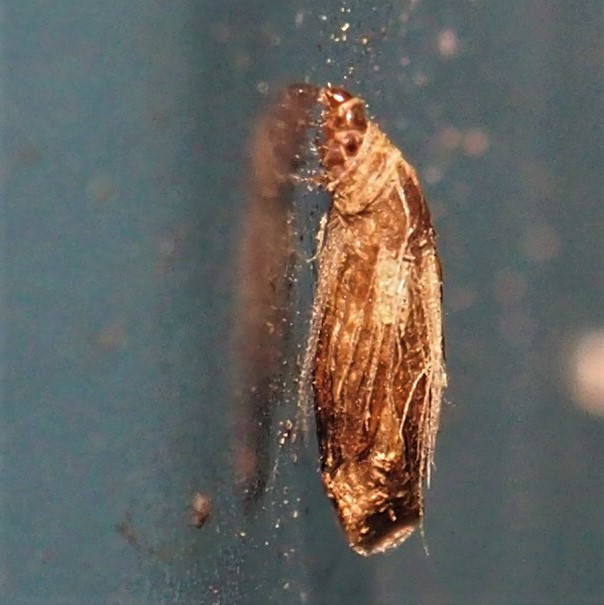
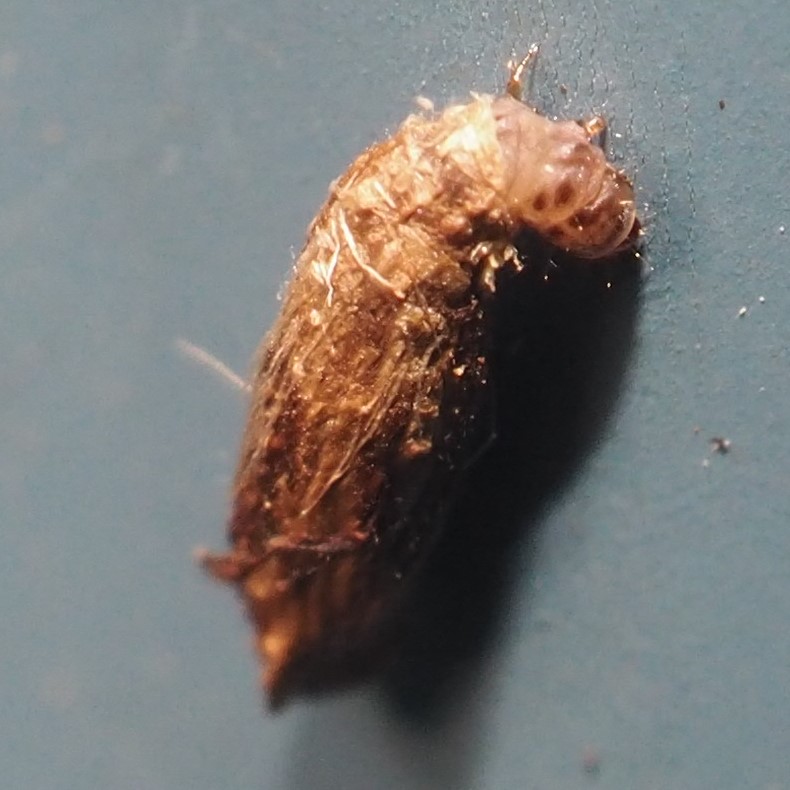
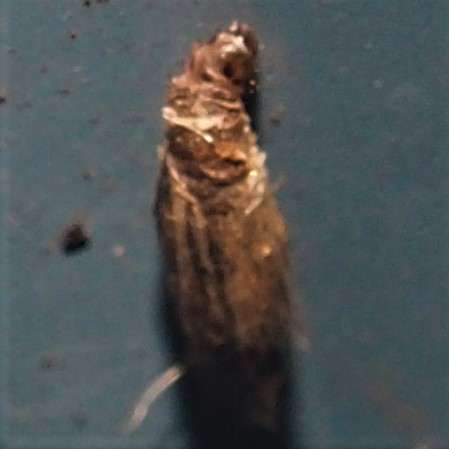
The so-called F-winged Barklice (Graphopsocus cruciatus) are alive and well. Here is one of the two little clutches of eggs on the East Wall. Second, a couple of nymphs; and third, an Adult.
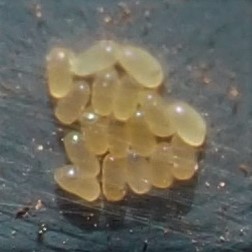
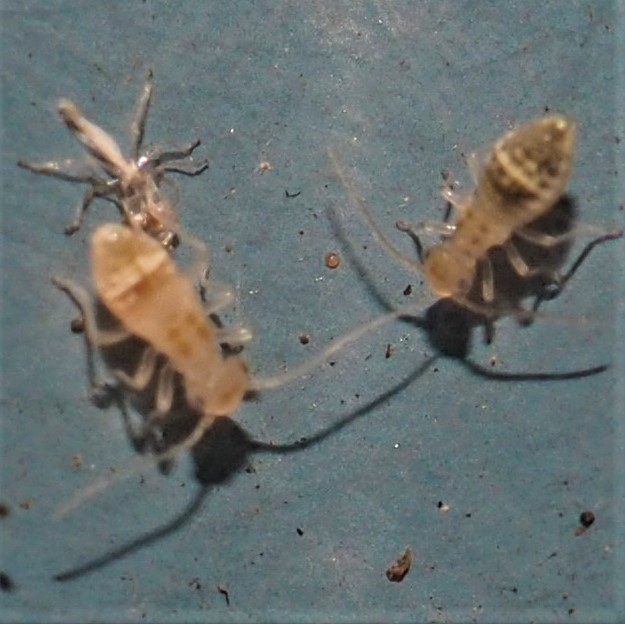
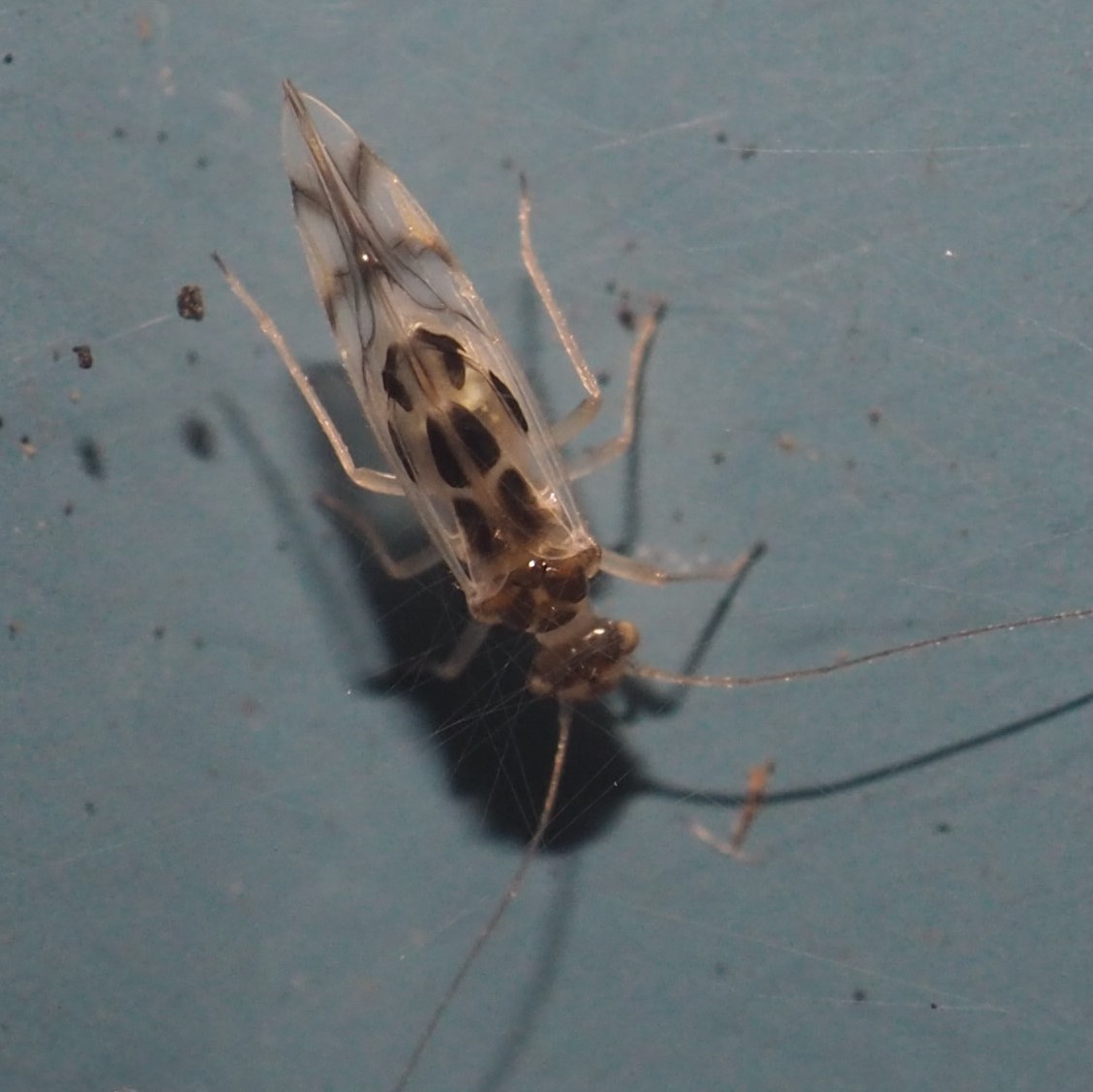
If you recall, a couple of weeks ago I was hot on the trail of a new nymph and was lucky enough to see that it turned into this next Barklouse, Psocus leidyi. In case you hadn't thought about this, click on picture 1 to see two red circles around a couple of roughtly triangular figures (called the pterosigmata) on the wings. Many Barklice have some distinguishing figures like that. I thought then that I'd seen all the existing nymphs so that there wouldn't be any more adults, but last week I spotted another adult so they aren't done yet. We hadn't seen the last of Trichadenotecnum alexanderae, but I saw one (remember last week when there were so many of them?) this week (picture 2) and although many people say they are hard to identify from a photo, I think this is the very animal! Third shows a Barklouse that I believe is a member of genus Lachesilla. Speaking of Lachesilla, last week I showed a picture of an unidentified Barklouse, and Diane Young has now identified it as Lachesilla nubilis (picture 4).
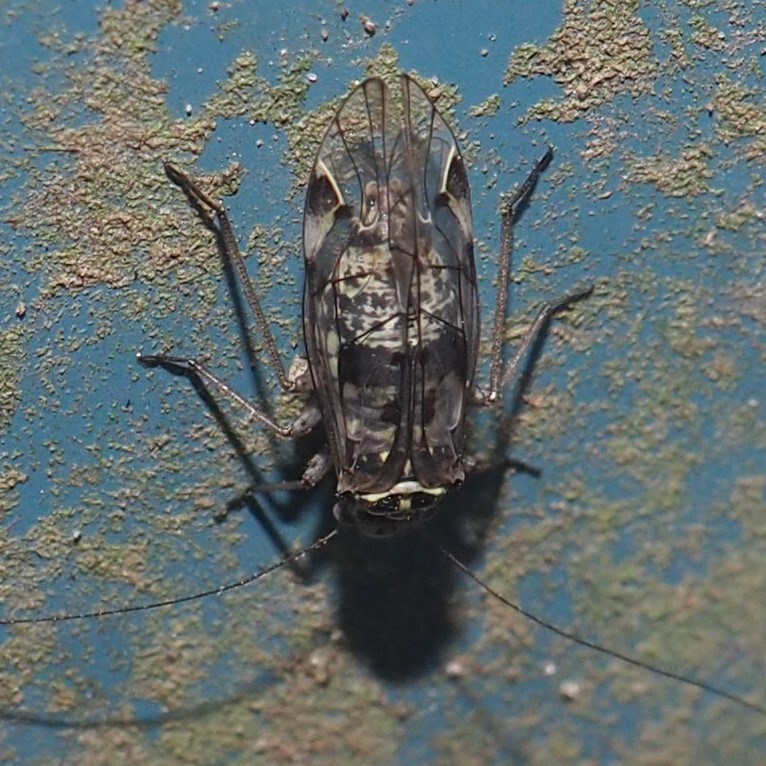

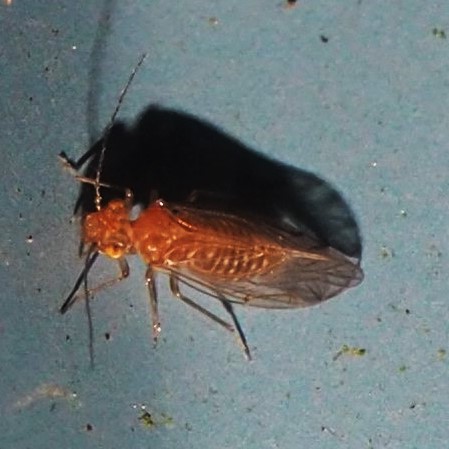
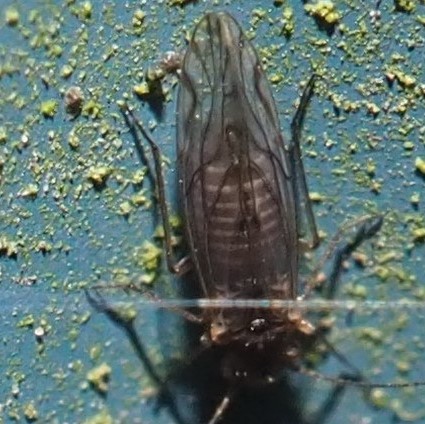
Speaking of unidentified, the first picture here shows a brown-winged Barklouse. I have a lot of pictures of it now, and am trying to sort them into some kind of nomenclature, but to no avail. One trouble with these brown Barklice is that we get pictures like number 2, which looks so much like Polypsocus corruptus (picture 3). One thing that may be helpful is that of the pictures which I've labeled "mystery brown", none of them has the bright red eyes of P. corruptus.


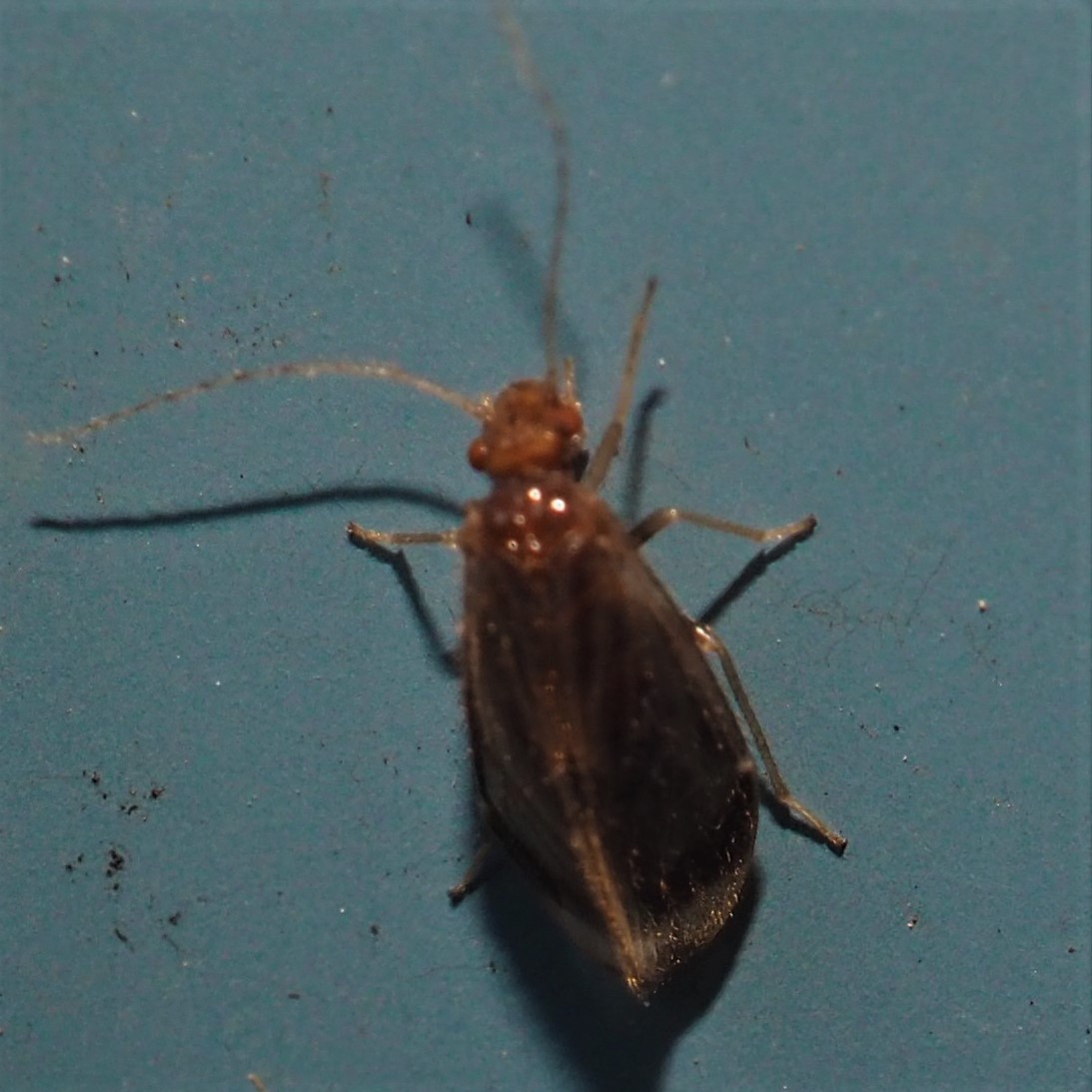
We have now seen a good number of Valenzuela flavidus adults (picture 1), and nymphs (picture 2). I THINK what we are seeing in picture 3 is a V. flavidus recently emerged adult, and that would account for this pallid color of the wings.

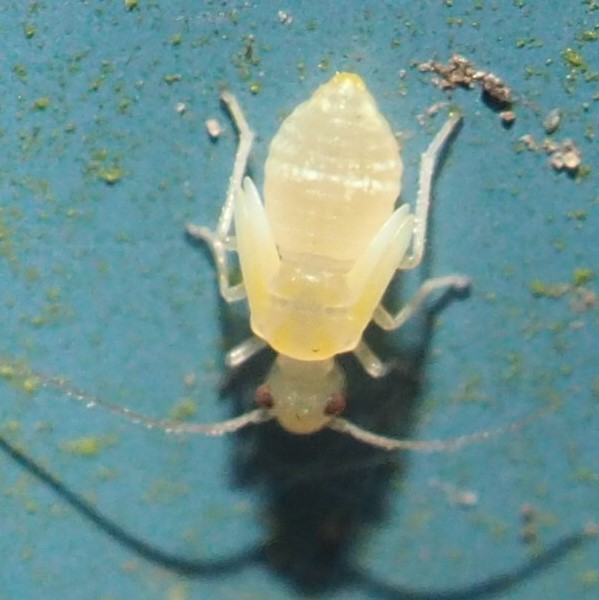
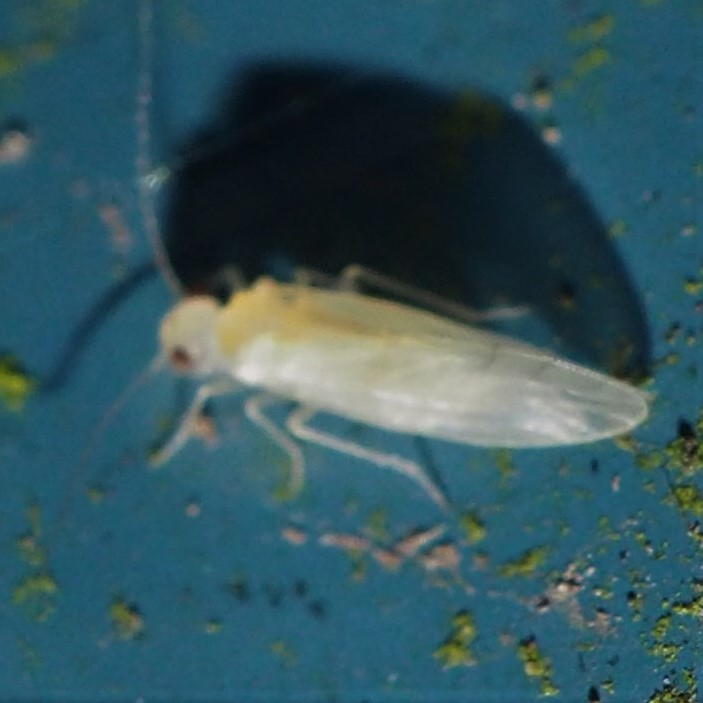
Our old friend Ectopsocus meridionalis is appearing now as just-moulted nymphs and older nymphs, and as eggs. I have a feeling we will be seeing adults again soon.

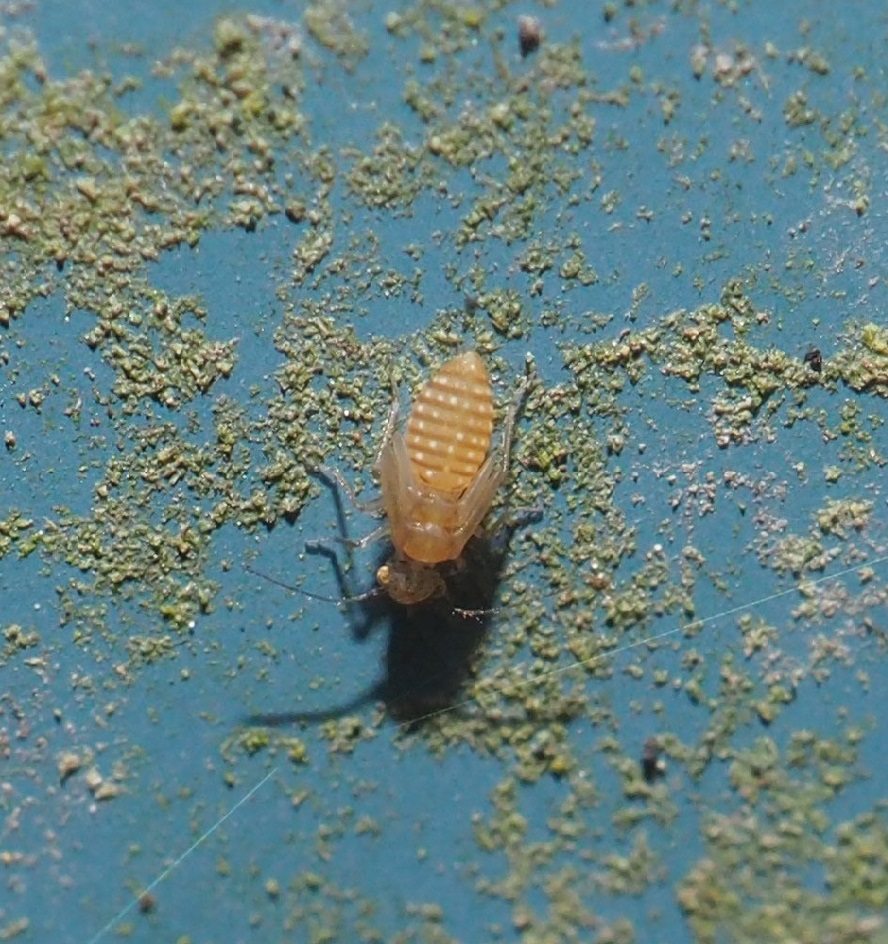
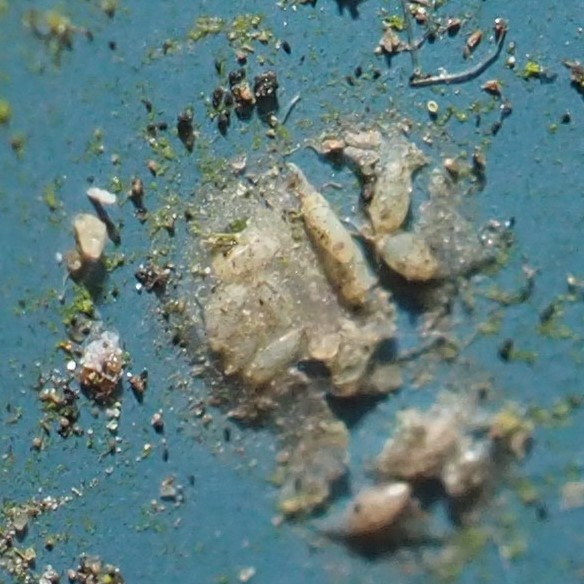
Luckily, the tiny Fleabane flowers can still attract the tiniest bees I ever see, the Pure Green Sweat Bees, Augochlora pura. You know how we hate misnomers, don't you? Since the Asters are finished blooming, we won't soon see the Honey Bees or other types that we used to see on the Asters.
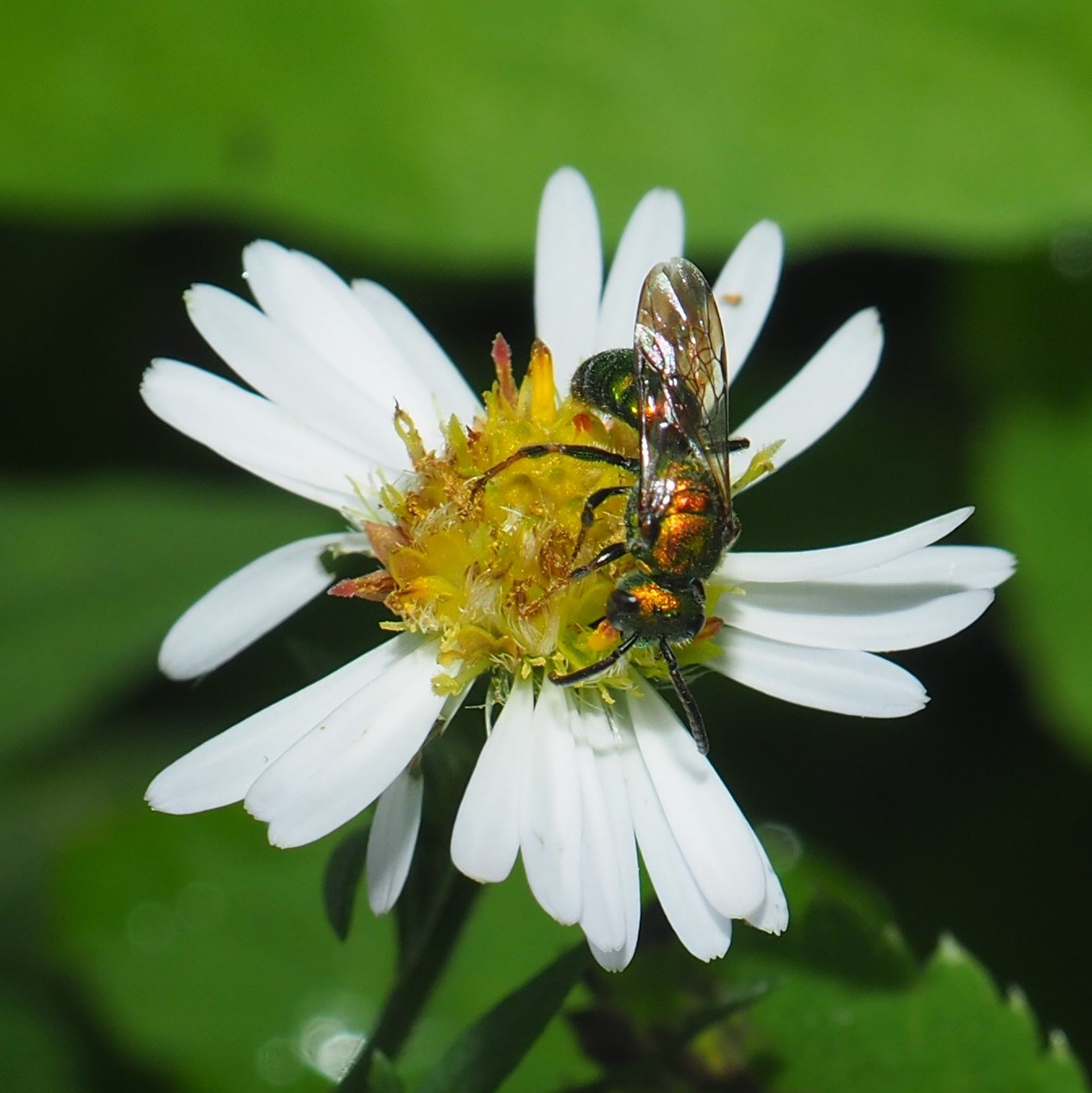
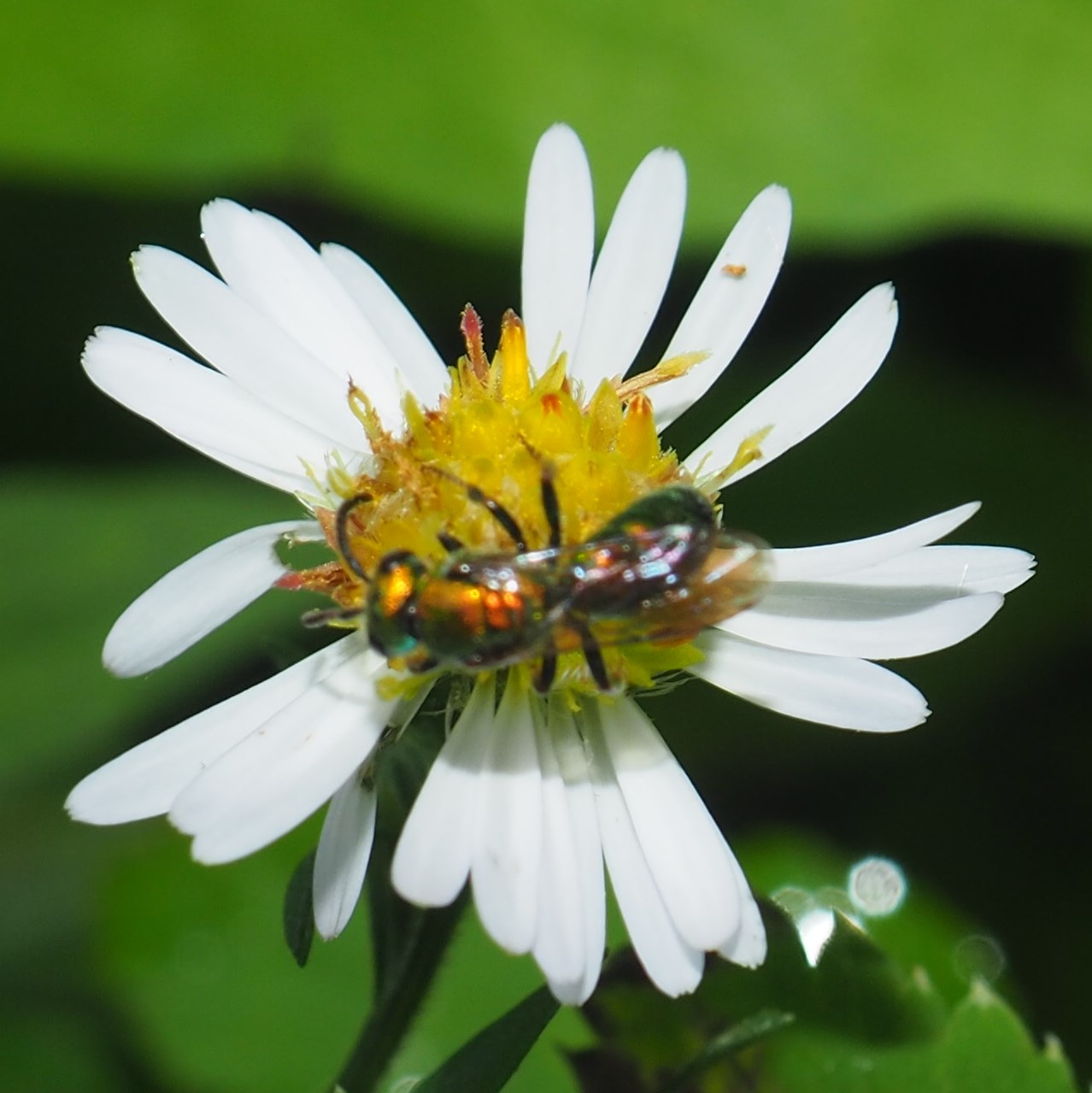
On to the Beetles! First up is one of those tiny Flea Beetles that all look so similar. Then a fairly hairy very round one. Of course you recognize the Asian Lady Beetle. I could fill out two pages of pictures if I were to include all the Asian Lady Beetles I have seen on my bedroom ceiling, right above the reading light, to keep warm I suppose. And finally, an unidentified Beetle.
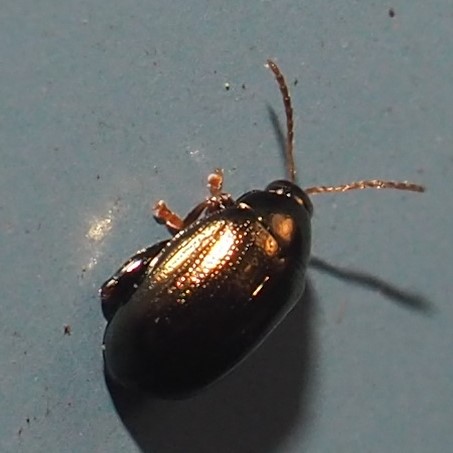
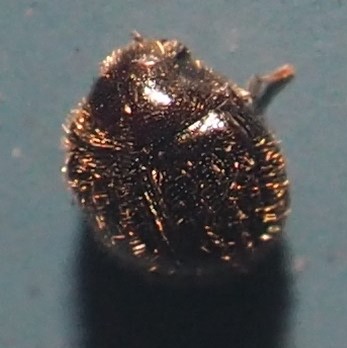
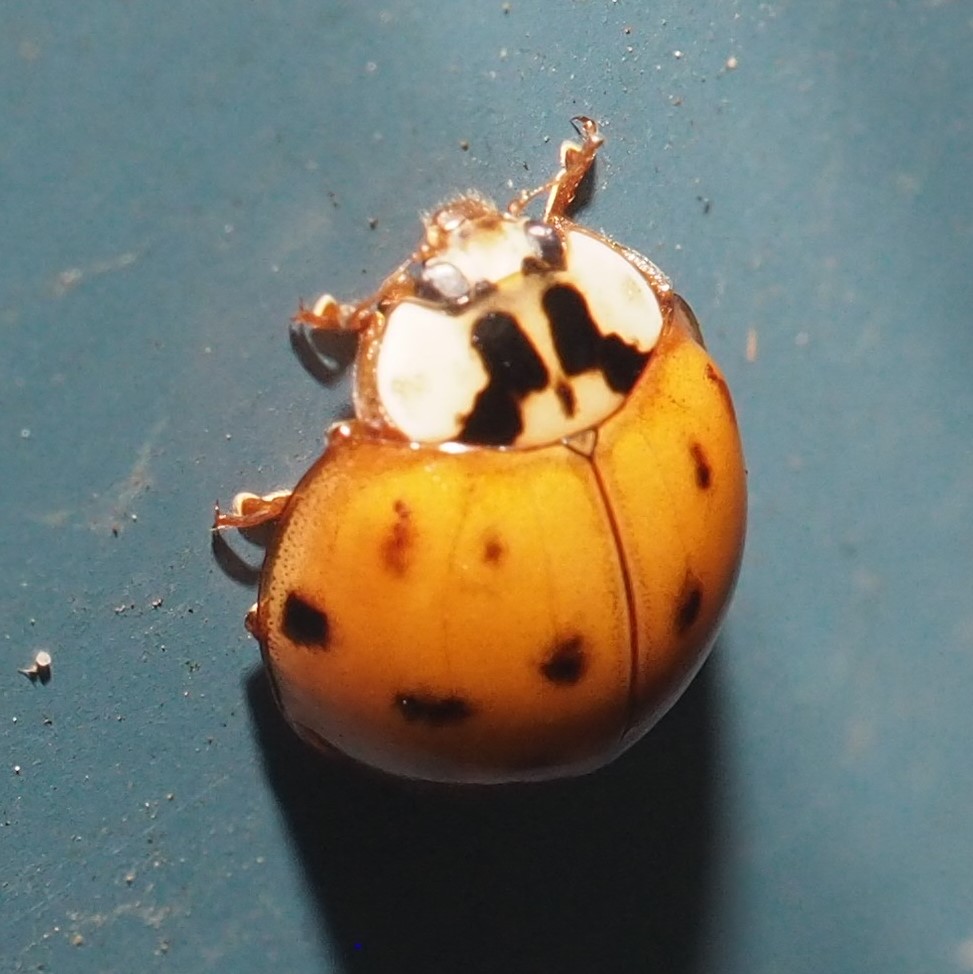
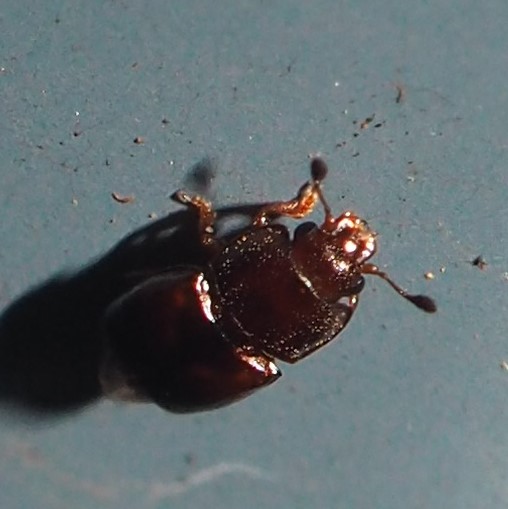
Last week we had two species of Assassin Bugs of genus Zelus. Guess what? This week I didn't spot even ONE kind! So we will have to start with other kinds of Bugs. Here are two views of a Brown Marmorated Stink Bug that was trying to come into the house to get warm.

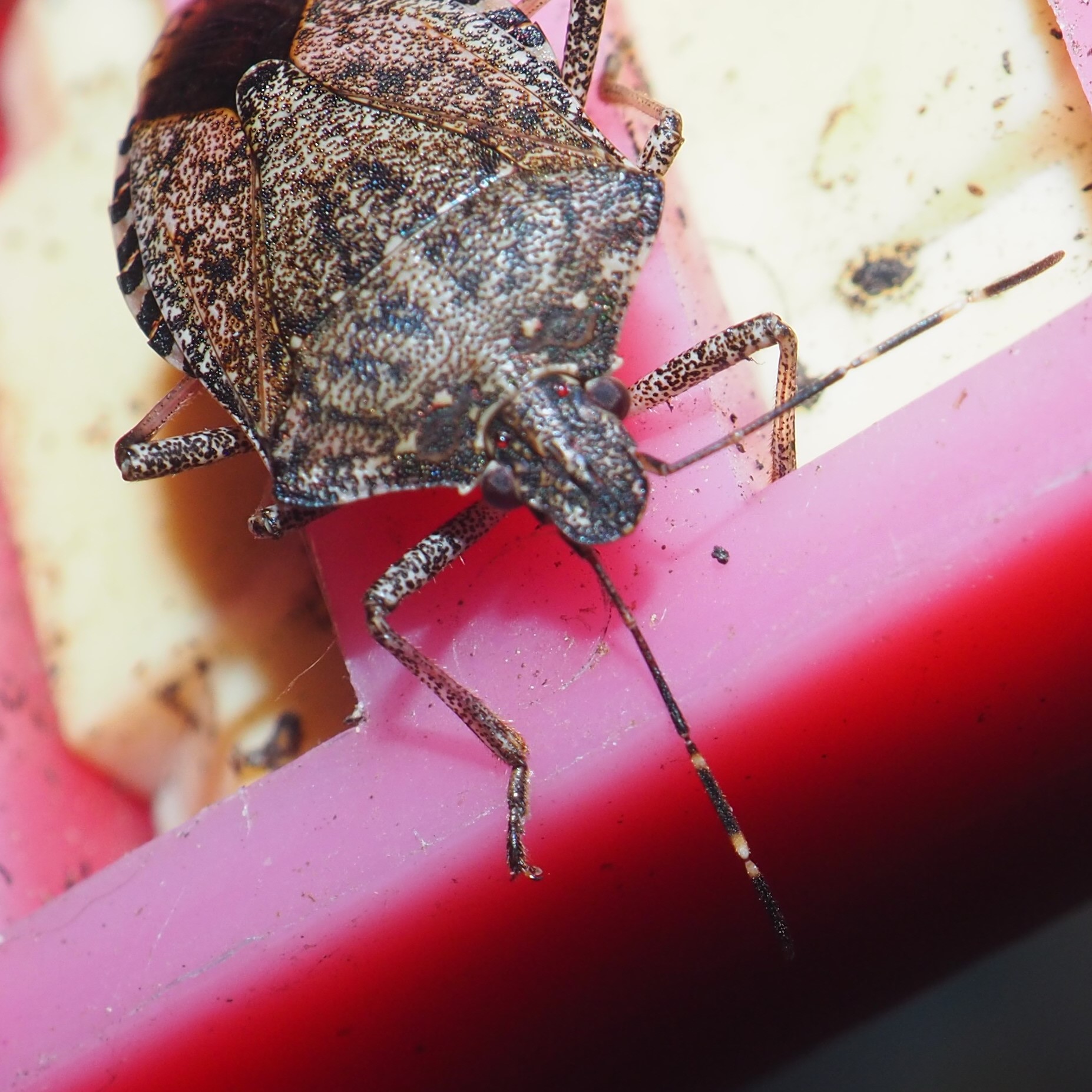
Let's see the Leafhoppers, which love to gather on the Wall, particularly the South and East Walls. Here is one of the most common forms of Eratoneura, followed by two variations on E. ardens, and then E. affinis.
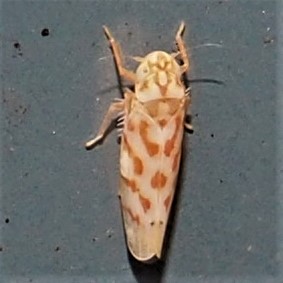
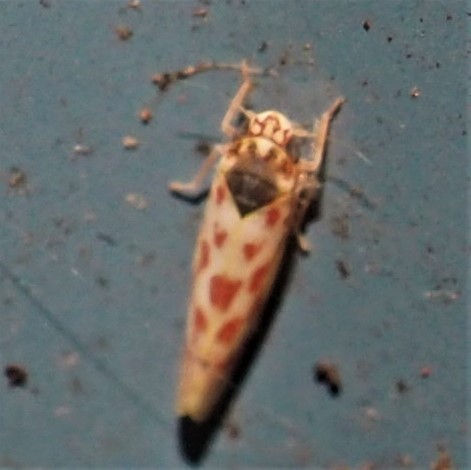
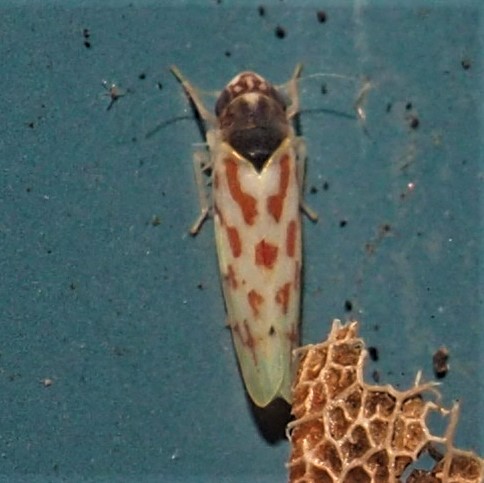
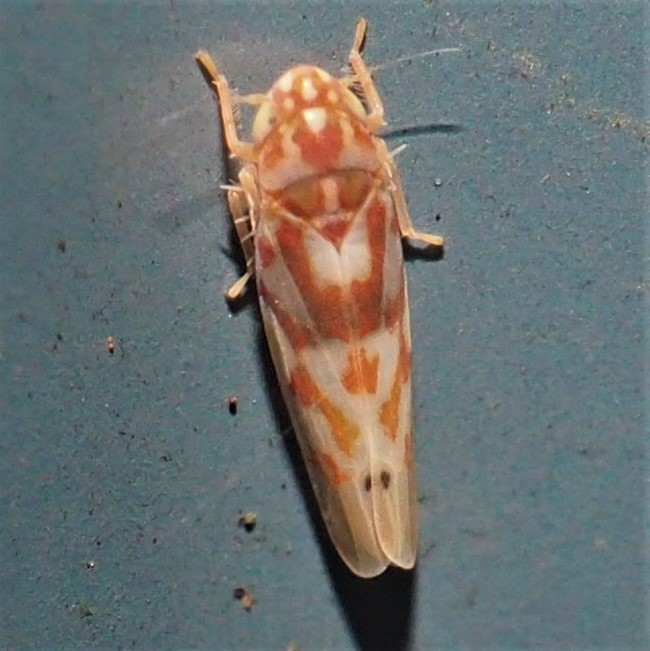
Here are two possible color variations on genus Erythridula.
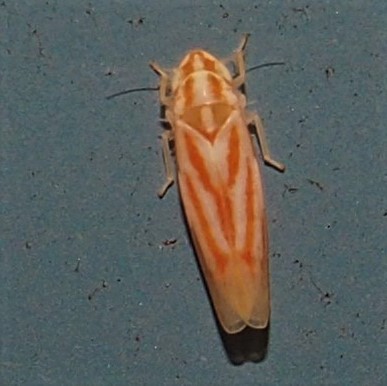
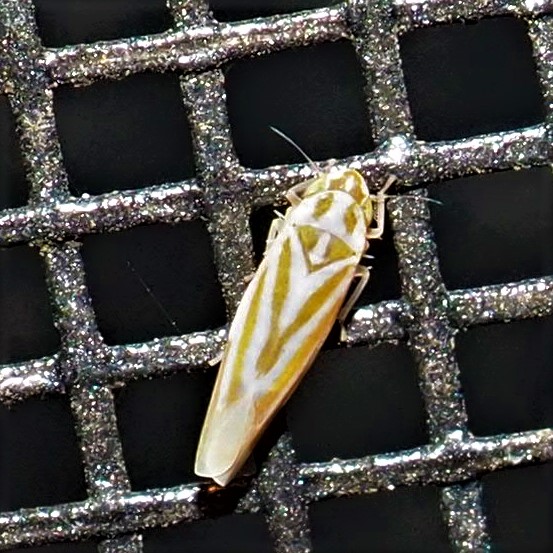
Here is one of the brown manifestations of genus Erythroneura, E. infuscata, followed by E. tricincta, the three-banded Leafhopper.
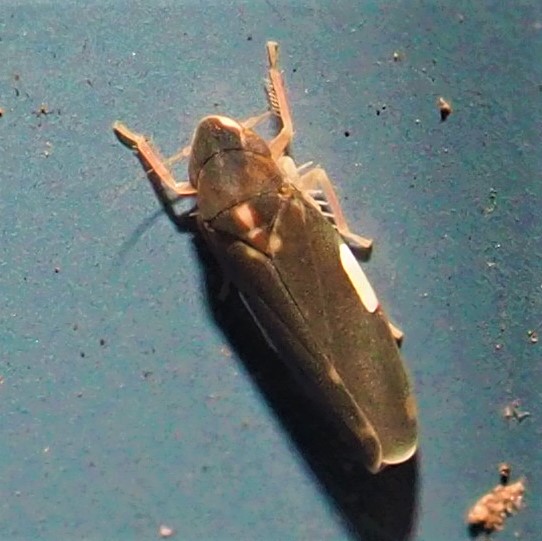
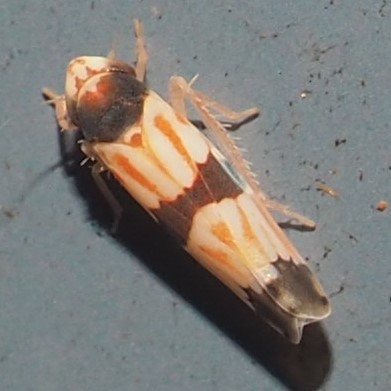
This is one of the most-loved leafhoppers, especially for its brilliant color scheme. It's the Red-banded Leafhopper. Then we have Jikradia olitoria, the Coppery Leafhopper. (It's the one whose nymph had the turned-up tail.) When I first saw number 3, I thought it was a tiny Moth. But then I saw it had pronged legs, which Leafhoppers have for hopping purposes. Flash. I posted it on iNat and almost immediately Kyle Kittelberger ok'd it as Hymetta balteata. Now we've seen 4 of them in Michigan over the last couple of years. On Saturday afternoon, I went hunting for any new Leafhoppers that had gotten photographed during the time I was writing up the rest of the Saturday files. For instance, this afternoon I found one new Leafhopper: the Grapevine Leafhopper. I hadn't seen it for over a year. Here it is - number 4 right down here.
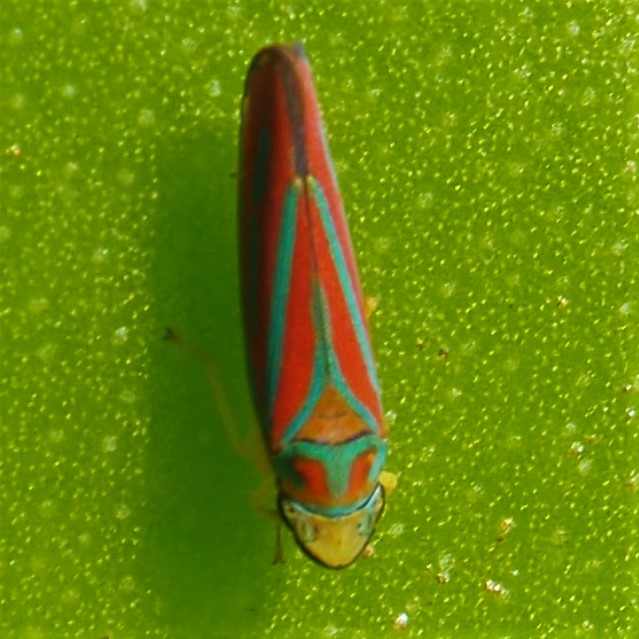
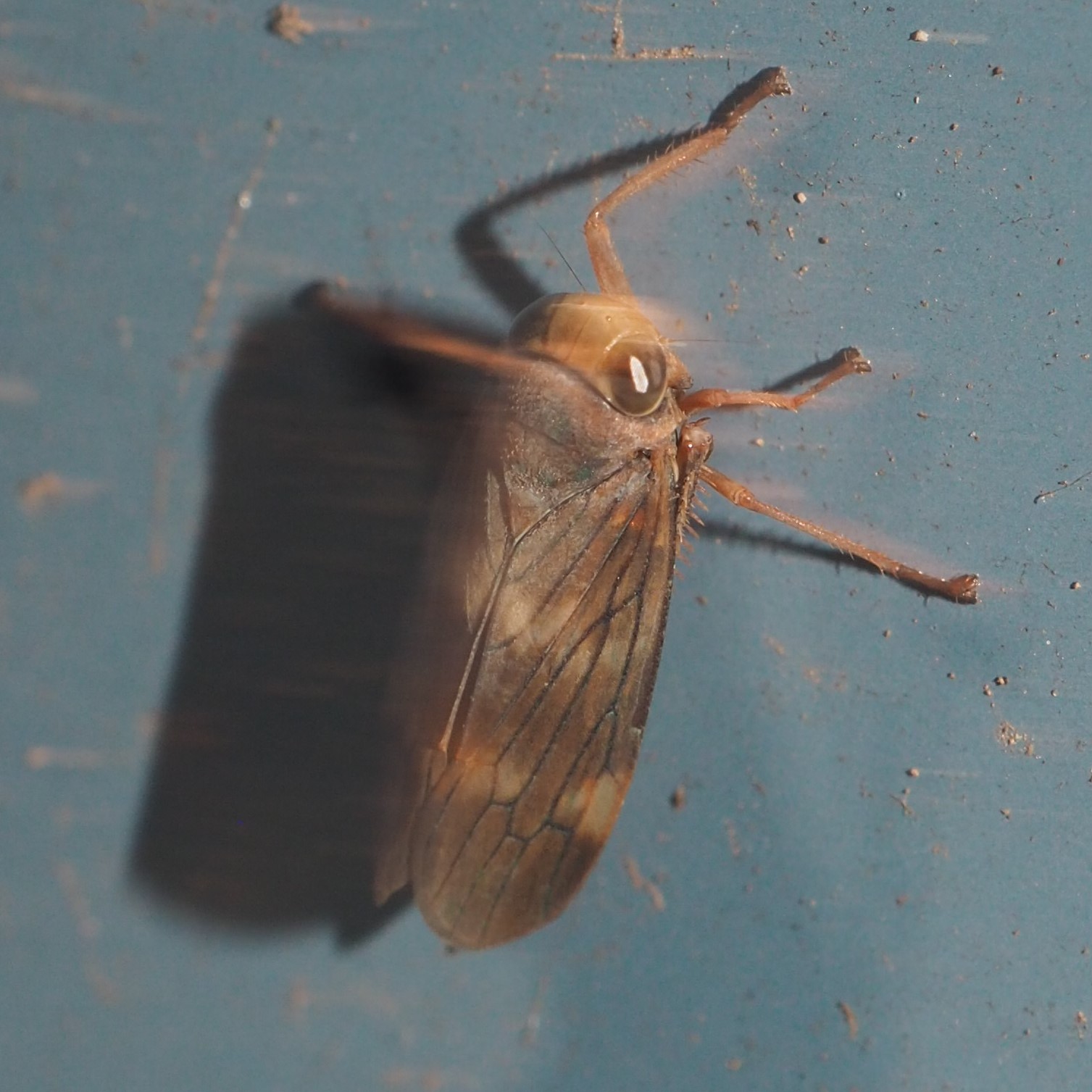
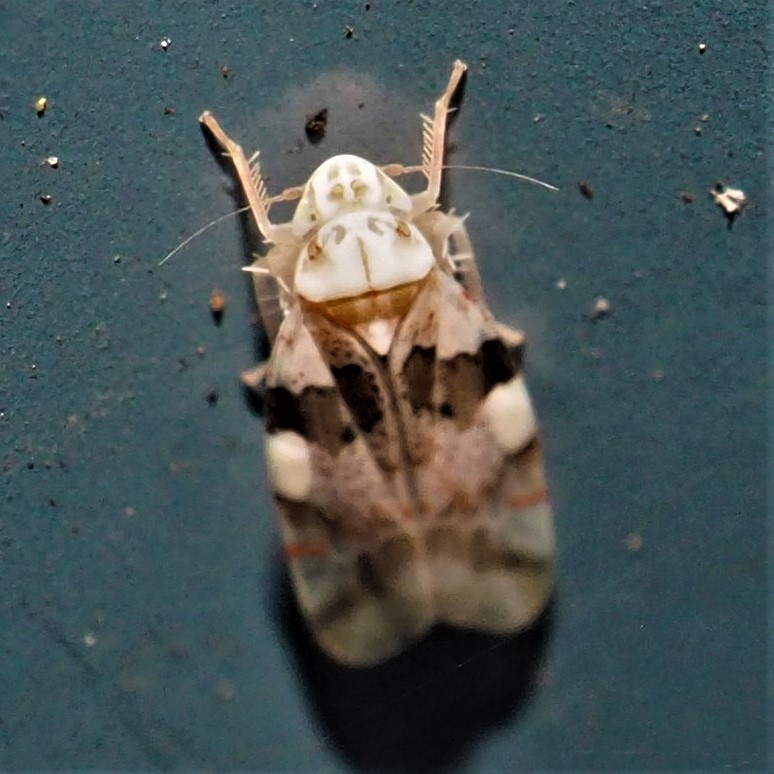
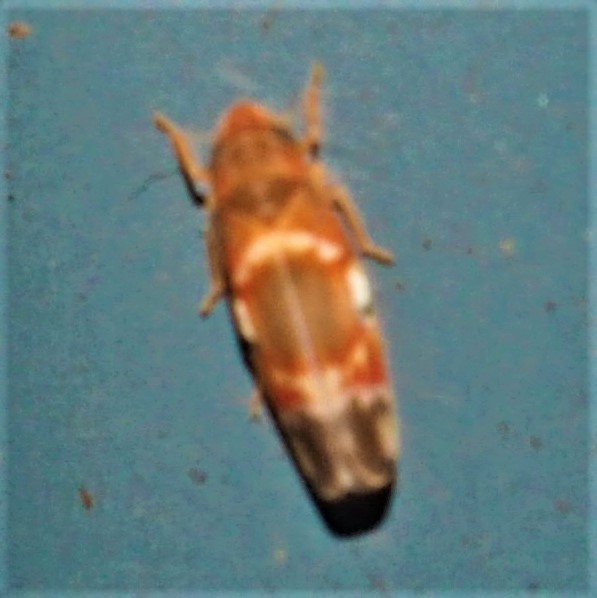
One of the afternoon catch was this Mystery Leafhopper. It is in genus Balclutha, but I've never seen a definite species inside that genus. The next looks like J. olitoria, but is clothed in Blue tones, which I love. Don't let me fool you: this is as much J. olitoria as any other. Third seems close to the Leafhoppers, but in reality is a relative of the Lacewings (though the resemblance is hard to see) called Dustywings.
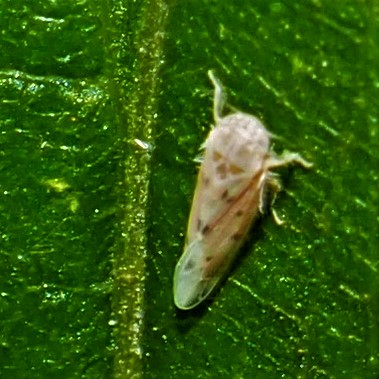
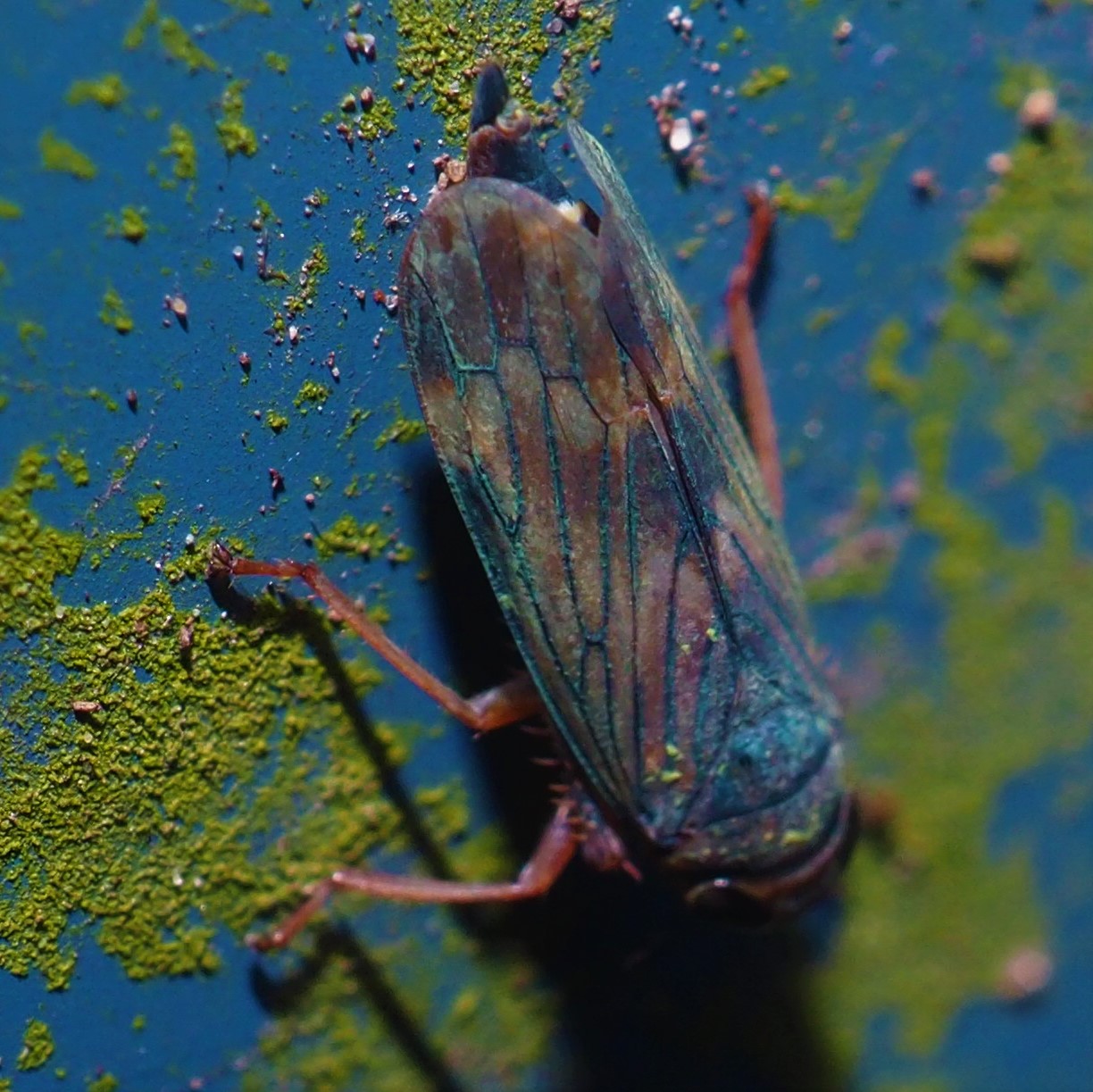
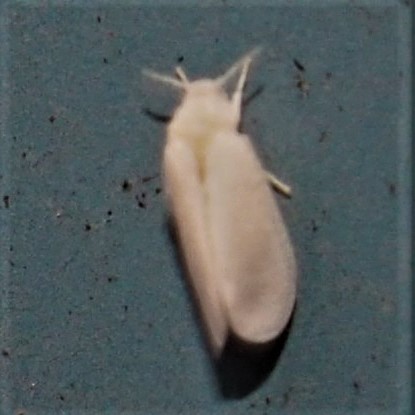
Here are some of the Flies of the Week. First is my favorite Crane Fly, the one that looks as if it had been block-printed. Then another Crane Fly.

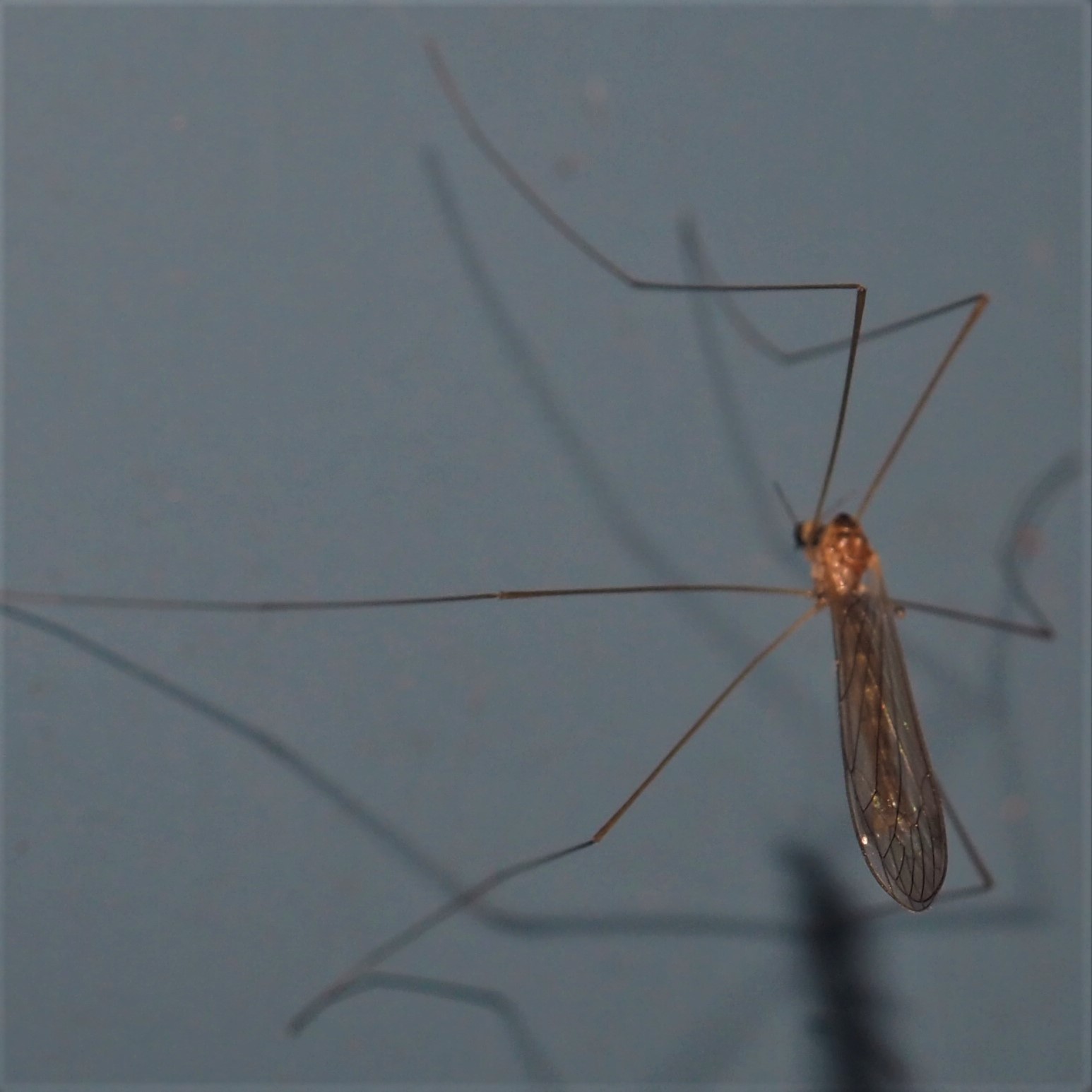
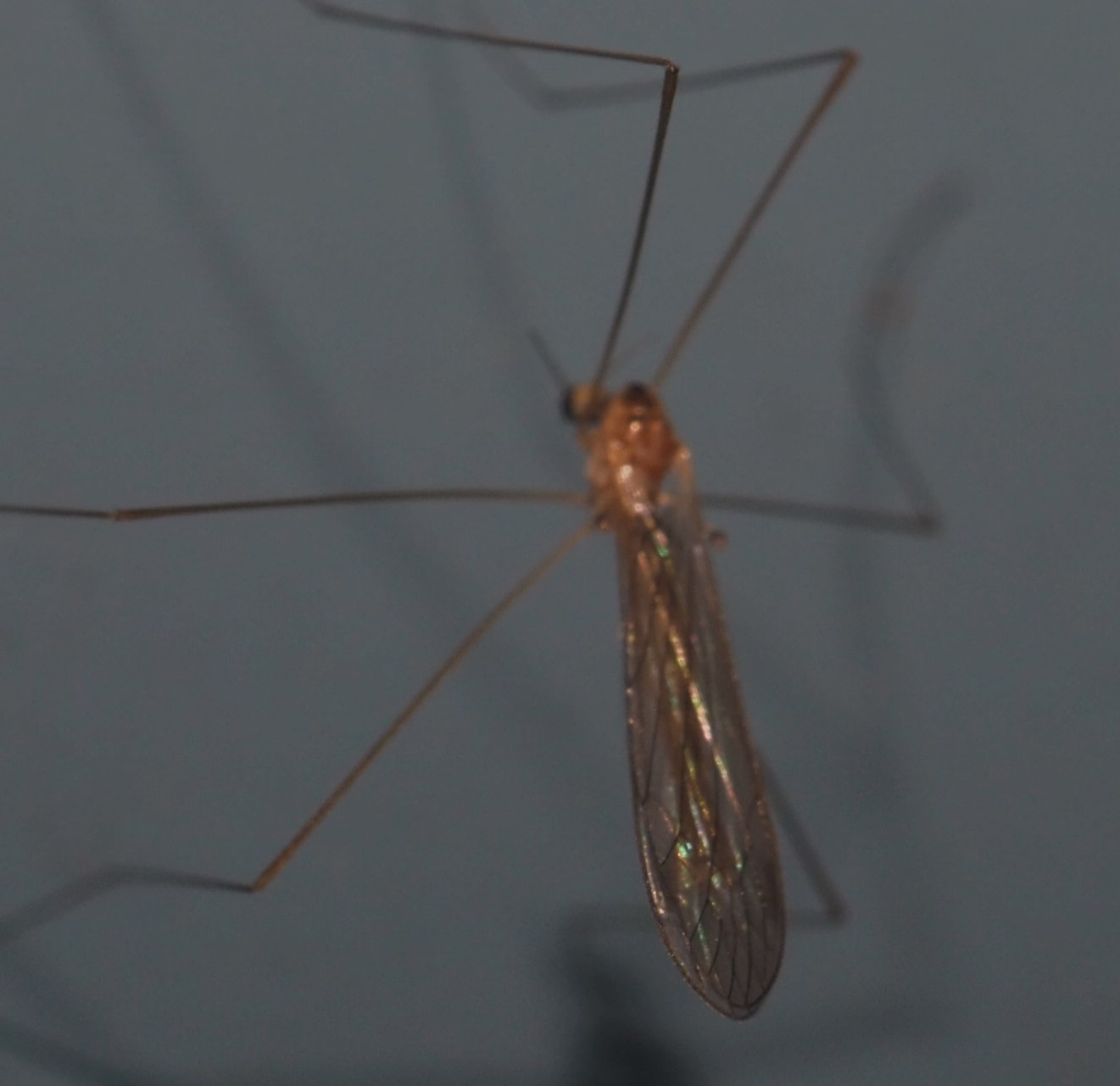
That tiny Fleabane flower that brought in the Pure Green Sweat Bee enticed this Hover Fly, Toxomerus geminatus, too. Second is a Midge, probably a Biting Midge. Next is a mystery Mosquito of genus Culex. It is a male - note the proboscis isn't sharp so as to suck blood. But the fourth is a female!
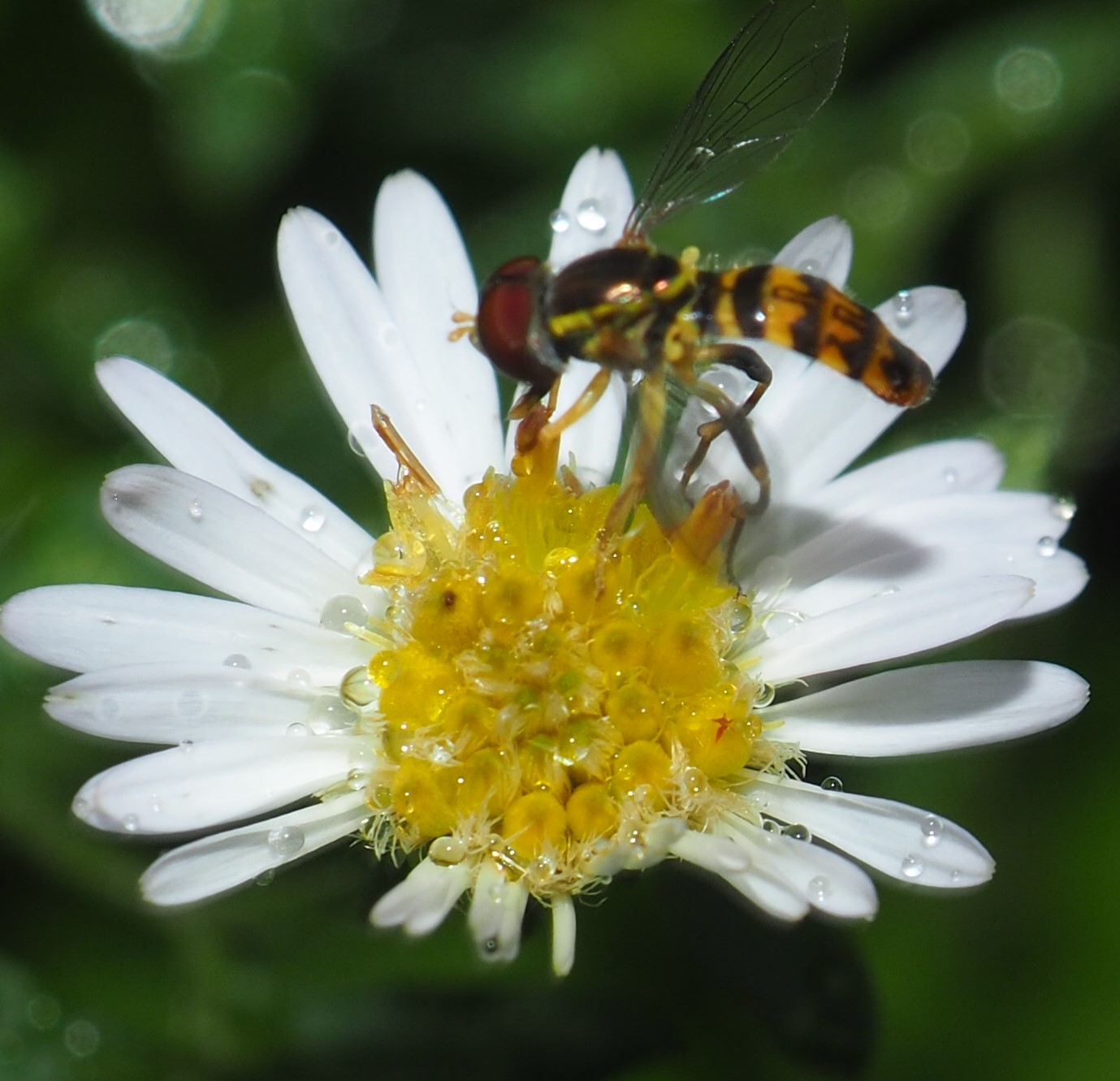
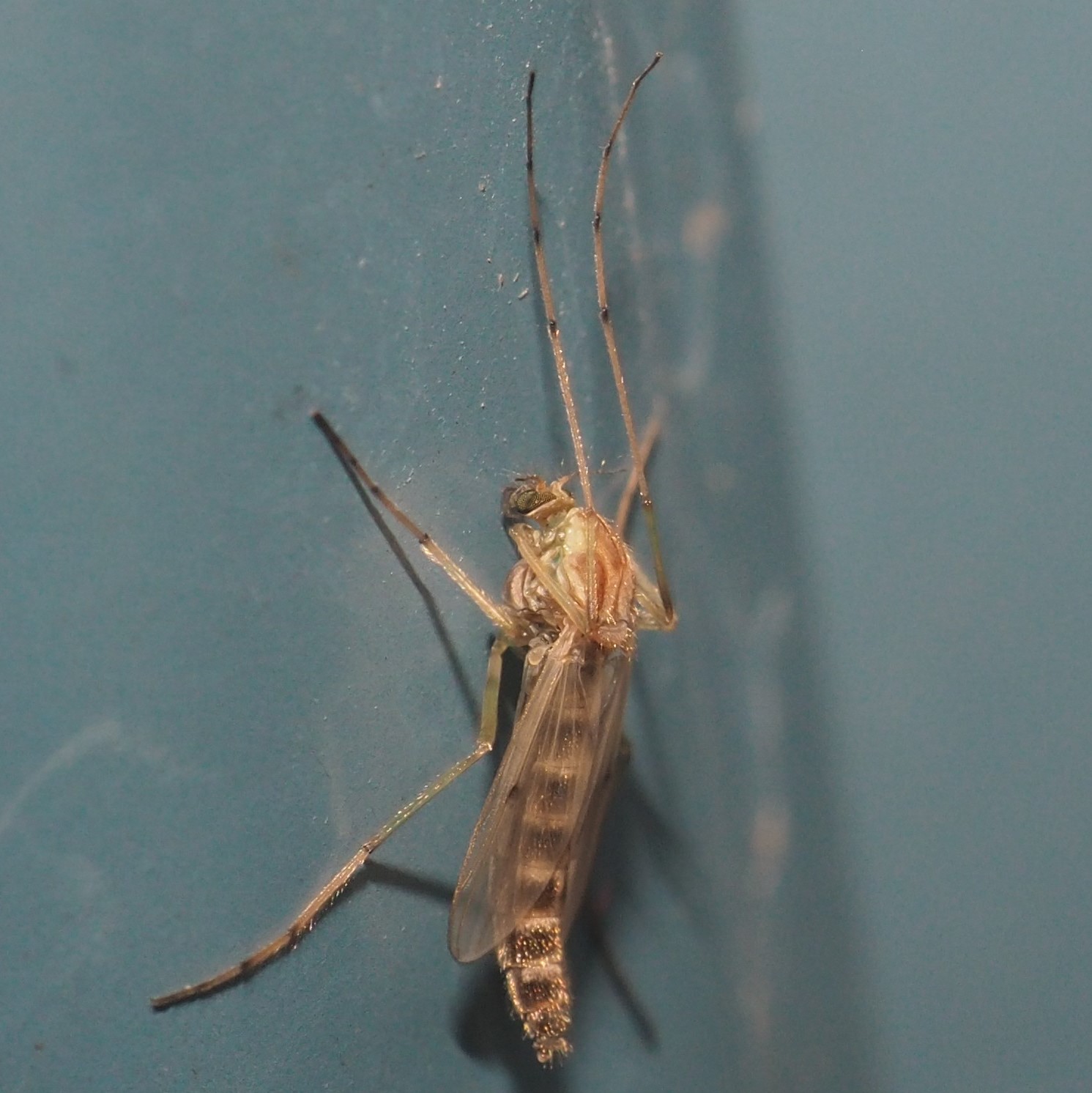

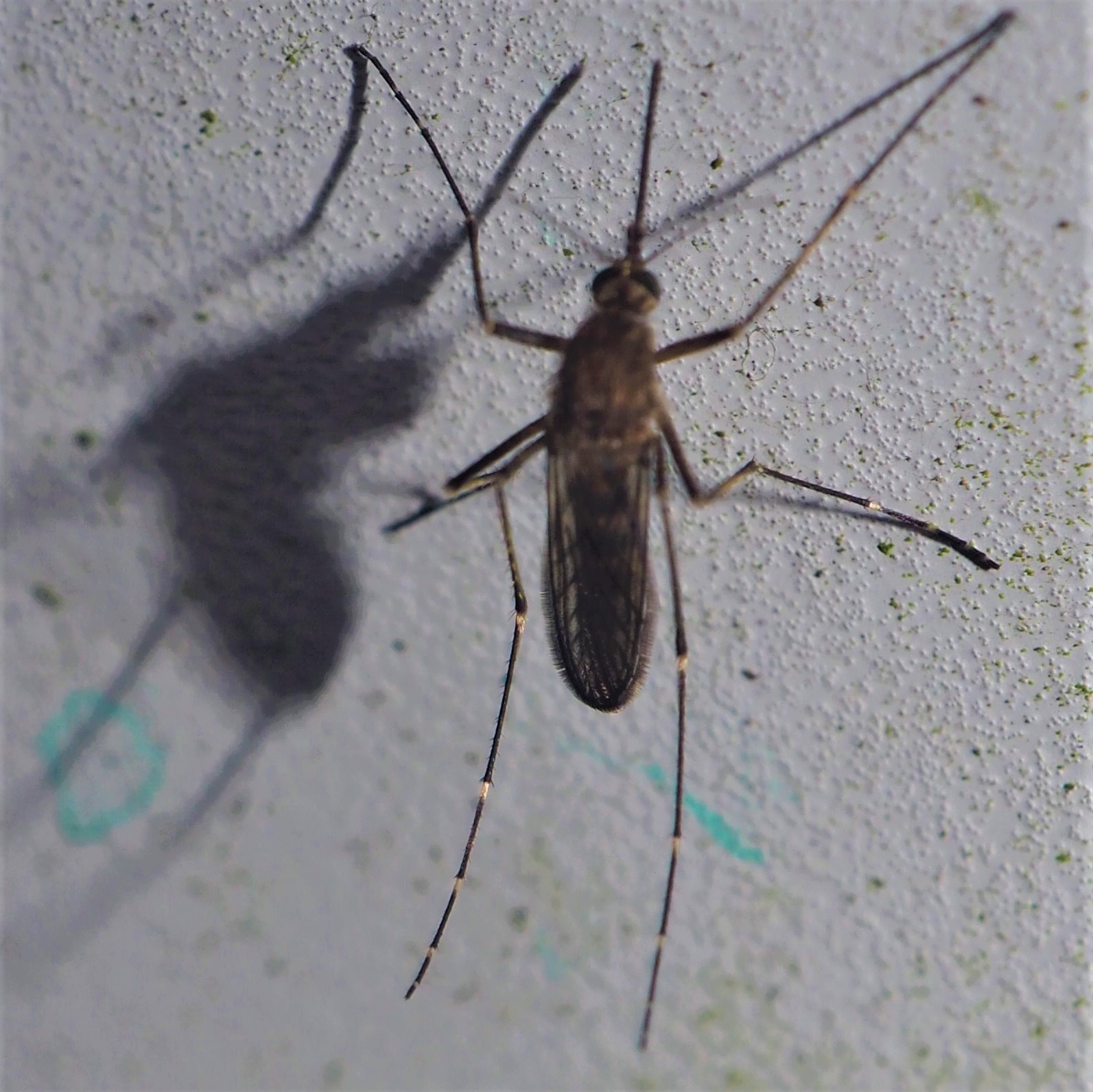
We had a couple of obvious Flies. Like this first Fly, which looks sort of like a Skate Boarder. The second looks like a Fly with a long pointed weapon. I'm sorry, I don't know what it is exactly. And one Bathroom Moth Fly. They are so neat! Oh! A reader asked me why it is called Bathroom? Apparently this particular Moth Fly finds something in the Bathroom Plumbing that it can't resist. Hence Fly-> Moth Fly ->Bathroom Moth Fly.

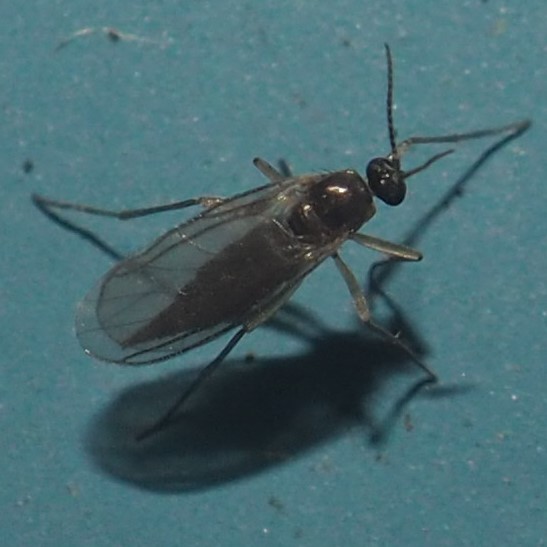
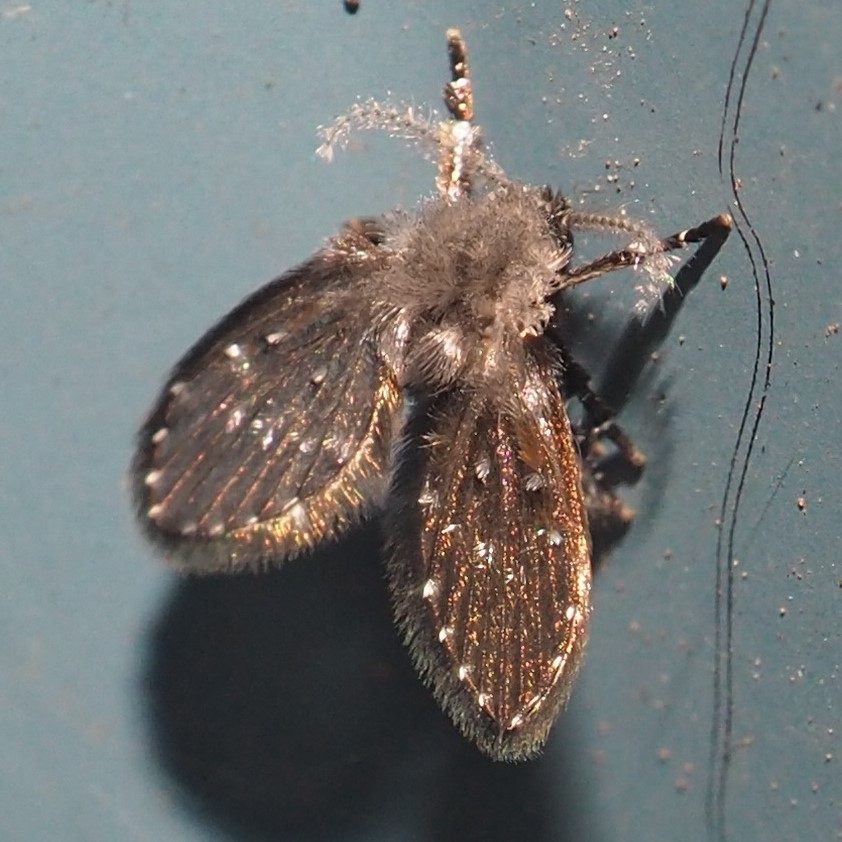
Saturday afternoon I found a few new Flies: here's the Dung Fly with the cool orange thorax and head; another Mystery Fly, and another Mystery Mosquito.
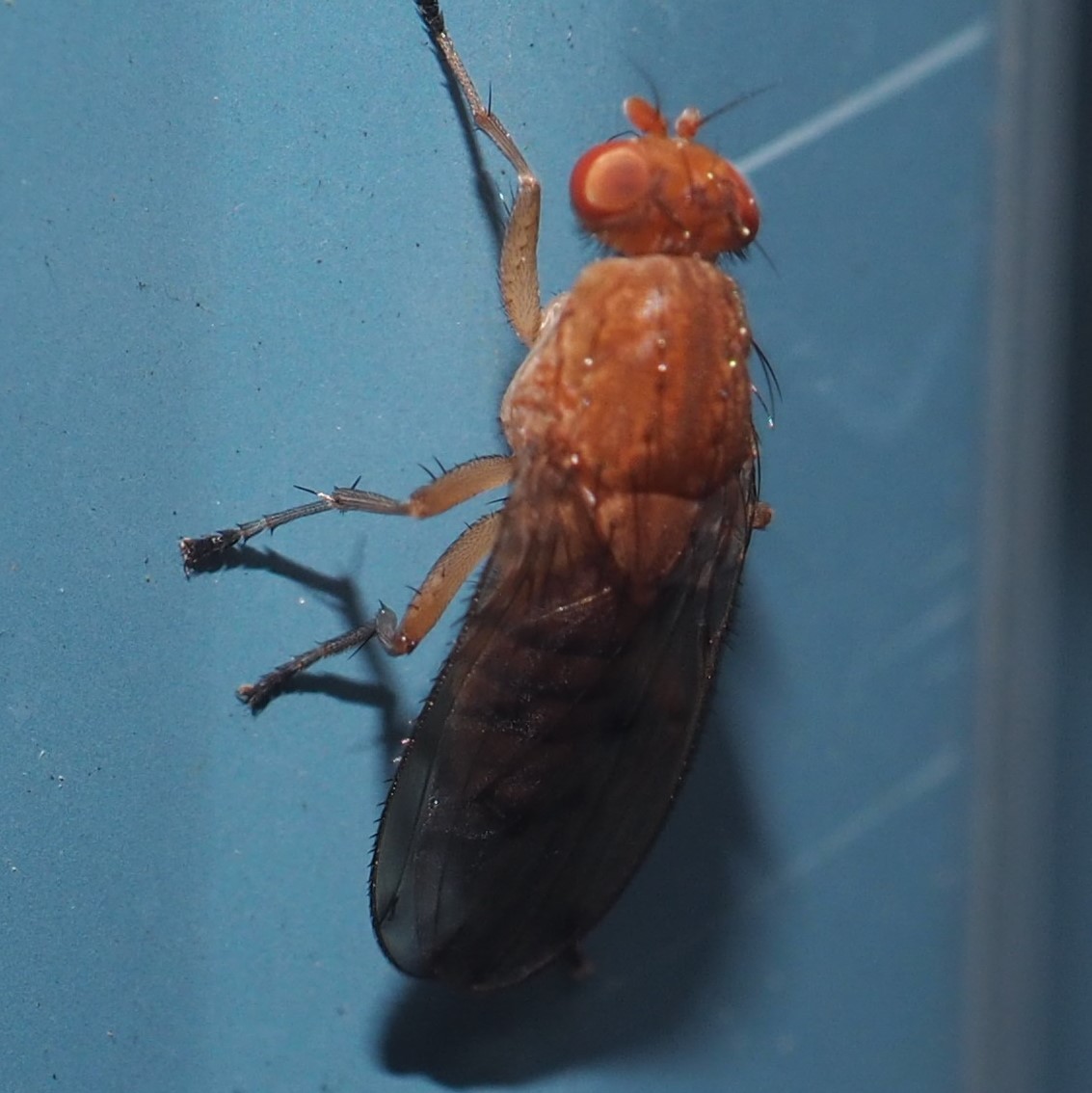
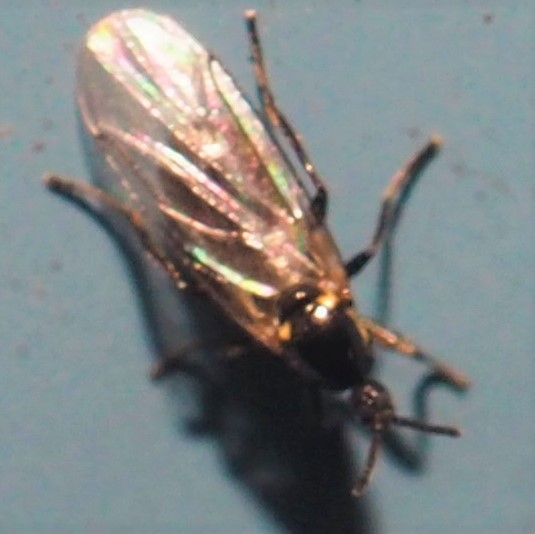
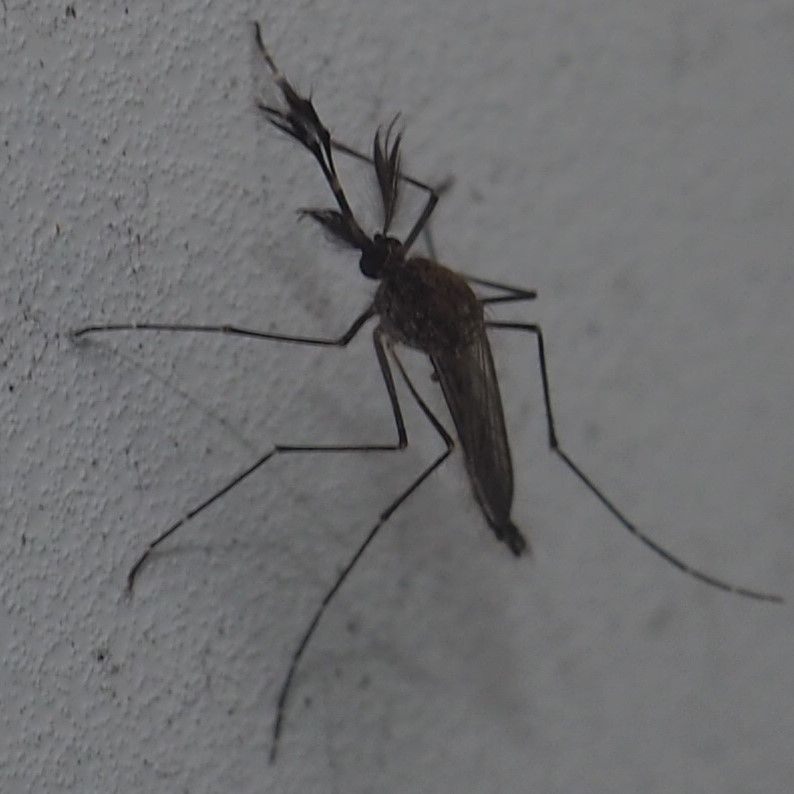
Let's go take a walk. There aren't so many flowers as before, but there is always something bright, no matter how chill the air is (until there isn't, which is trying to come over us as soon as possible). Here are an Asiatic Day Flower, a relative of the Spiderwort, which has died out for the year a few weeks ago.
Then two views of the light purple Aster that planted itself by the Shop Wall.
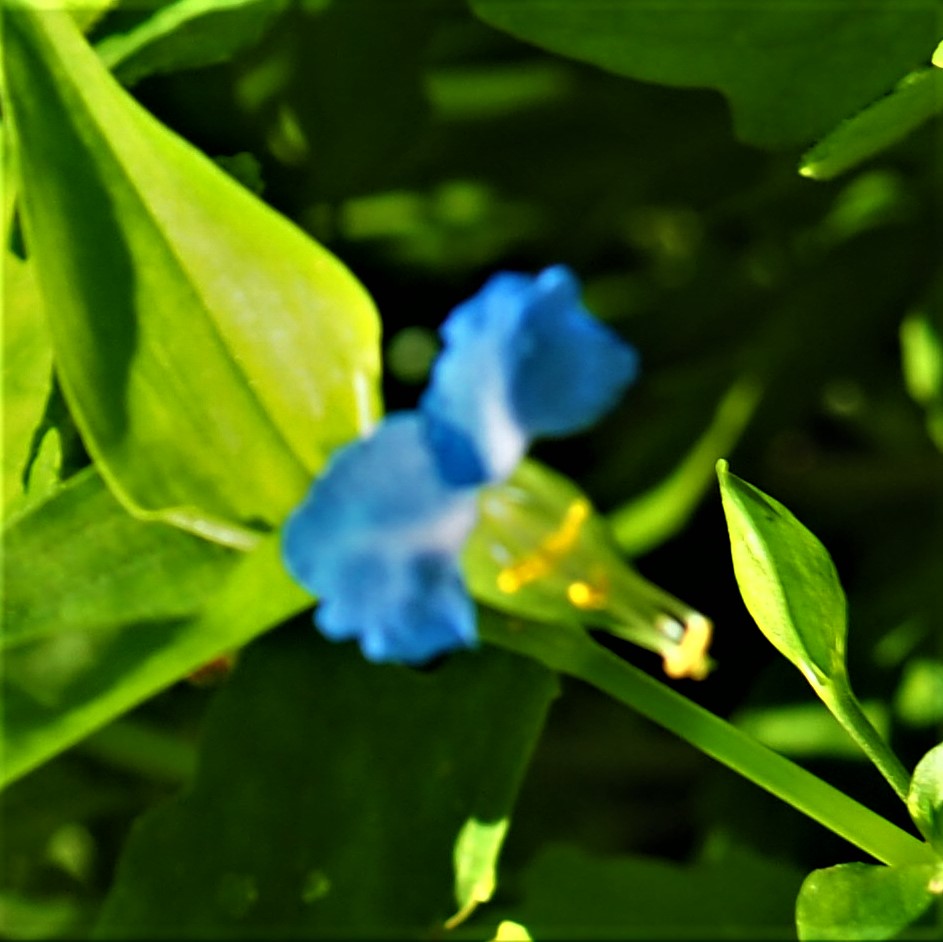
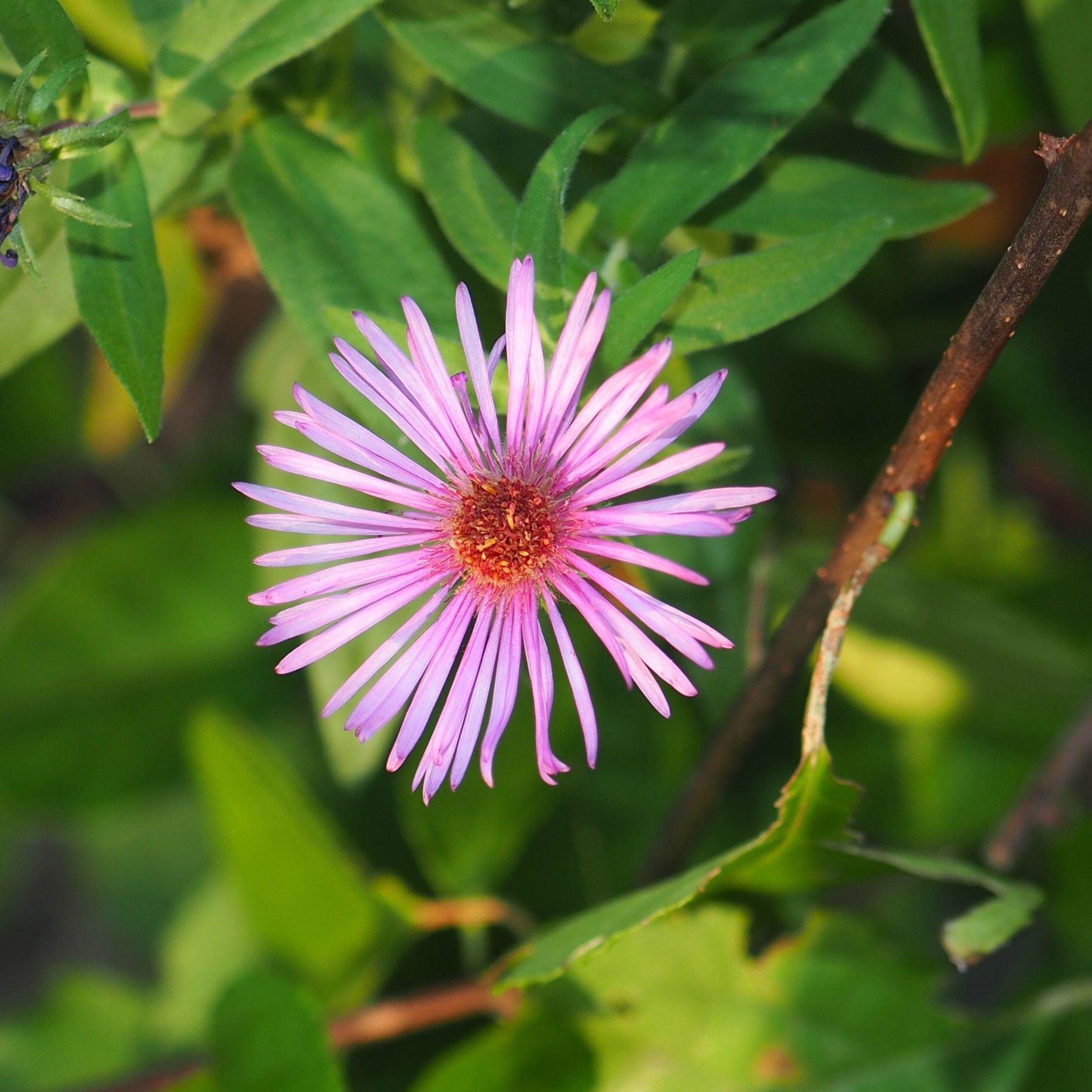
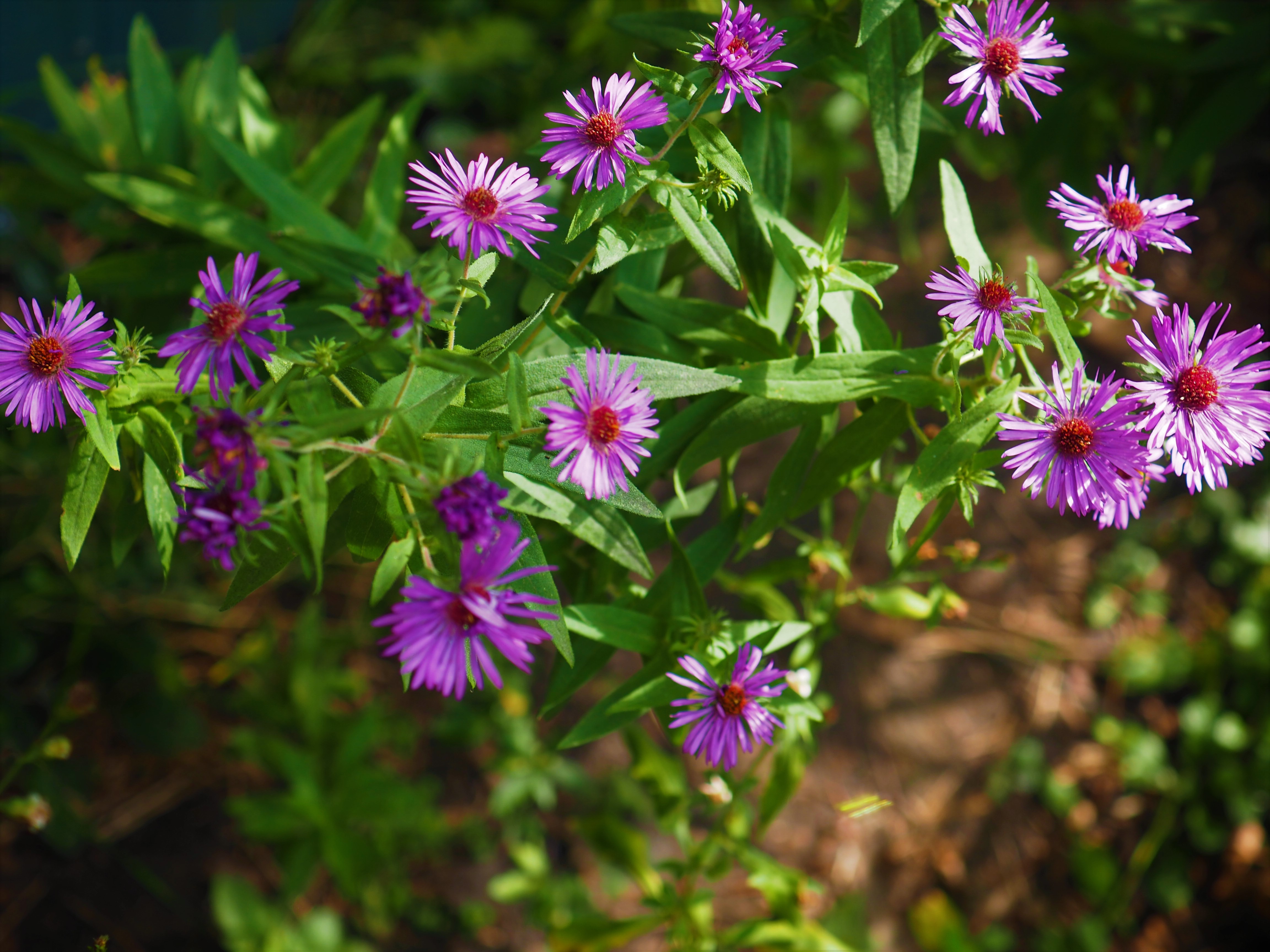
No more yellow Goldenrod, but the Euonymus is getting redder and redder each day. Here's a montage of red leaves developing on the Euonymus (Fire) Bush. By the way, the bright red berries on this plant are beloved of Birds who stop in for a wintery snack.
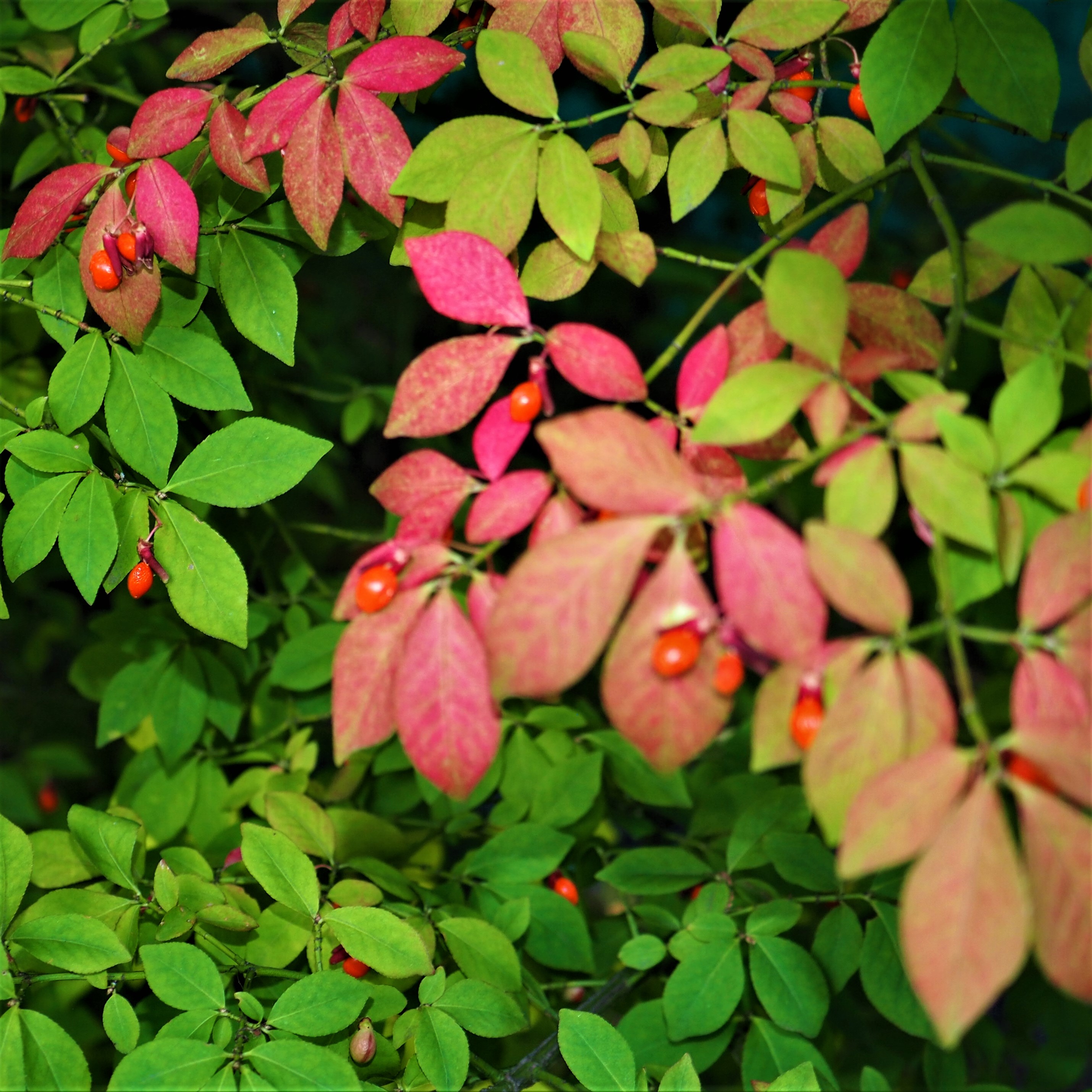

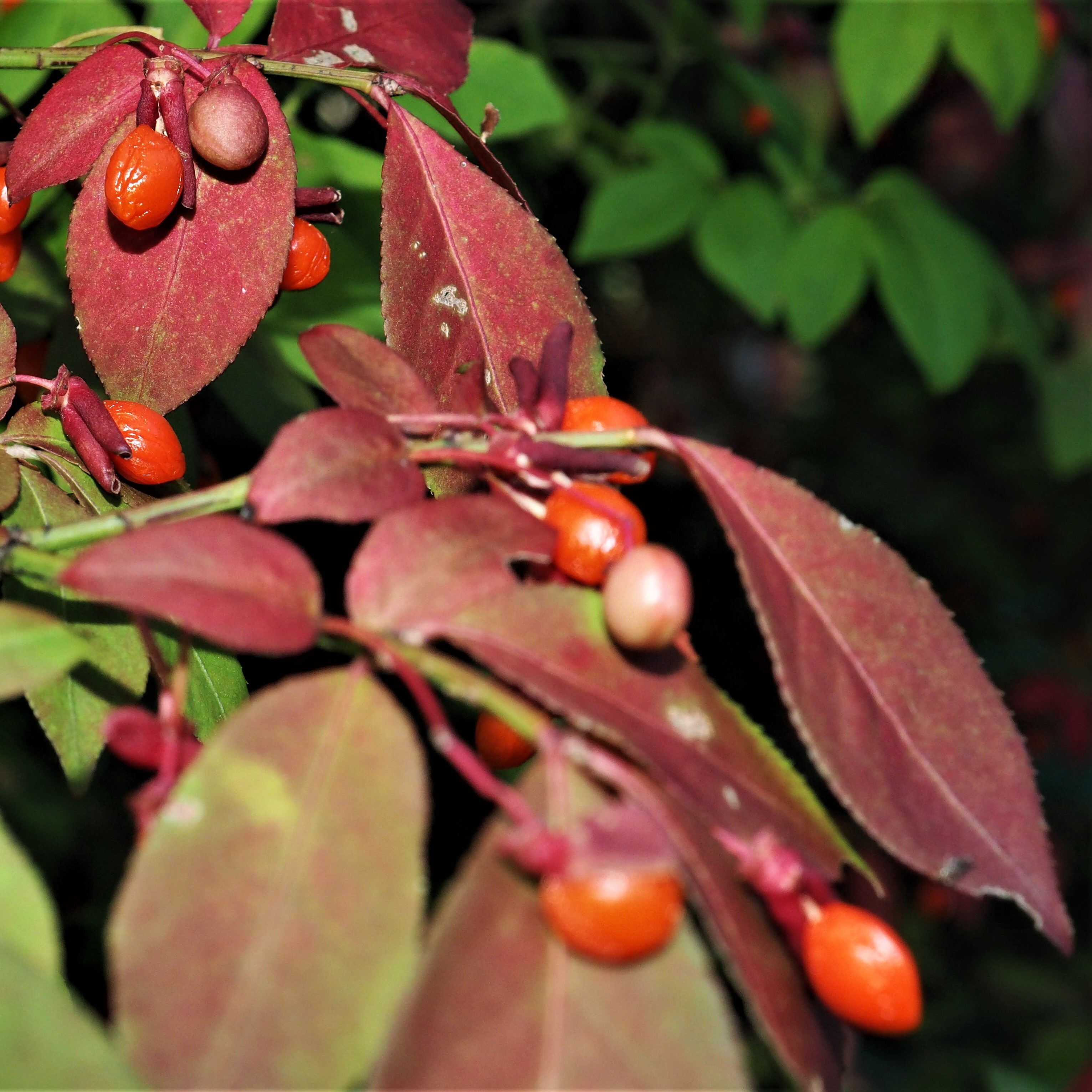
We had a few really interesting Spiders. The most exciting was what I think is a Long-palped Ant Mimic Sac Spider. We also had a couple of large Crab Spiders, but I'm not great at identifying the differences. This next one looks a bit like genus Bassaniana, but doesn't have the usual heart-shaped carapace (abdomen). And the next seems really unusual since the abdomen is so small and tidy. See how I decided not to say tiny and tidy? Next time...
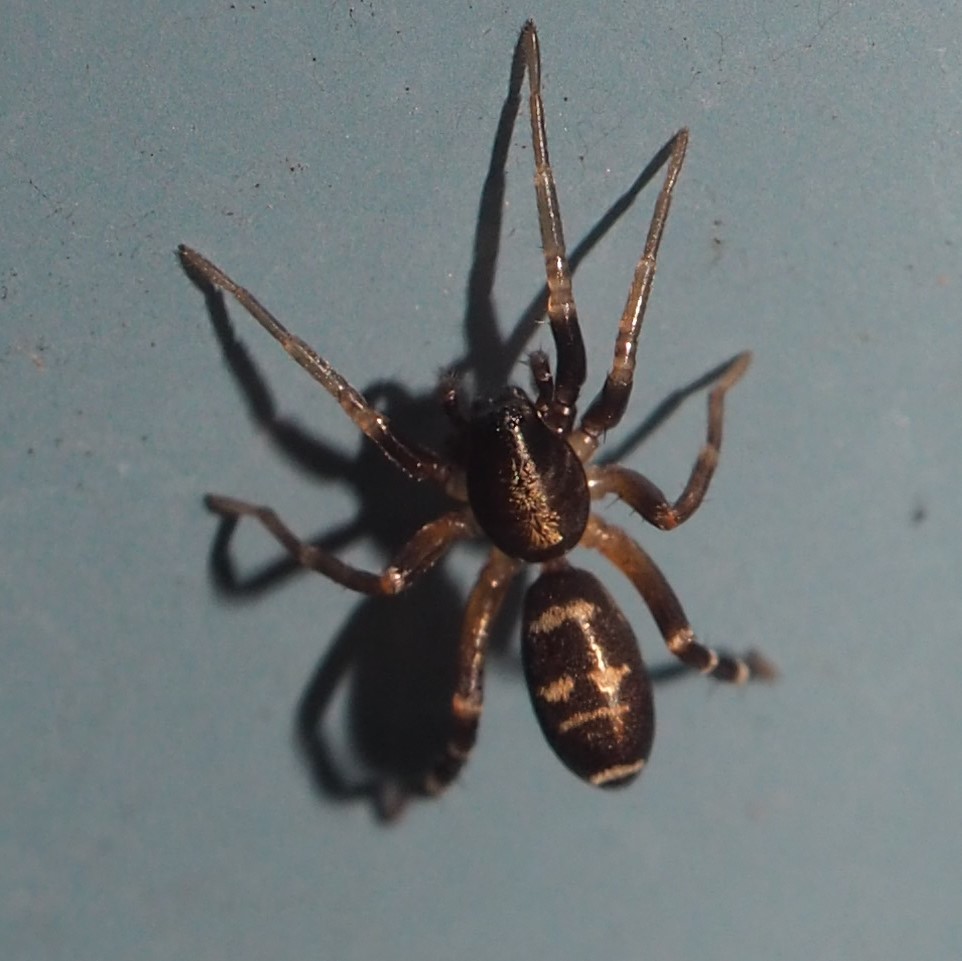
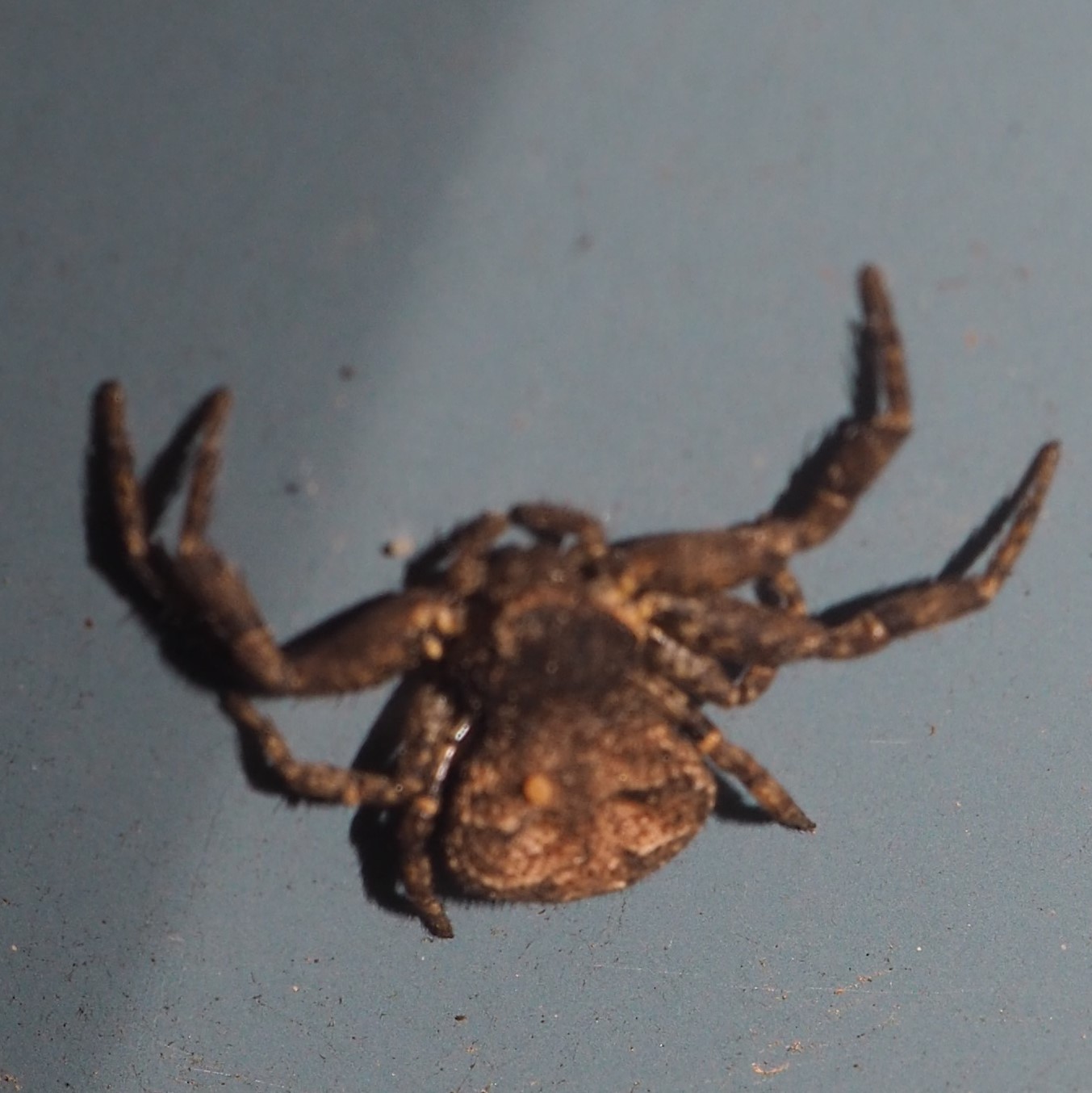
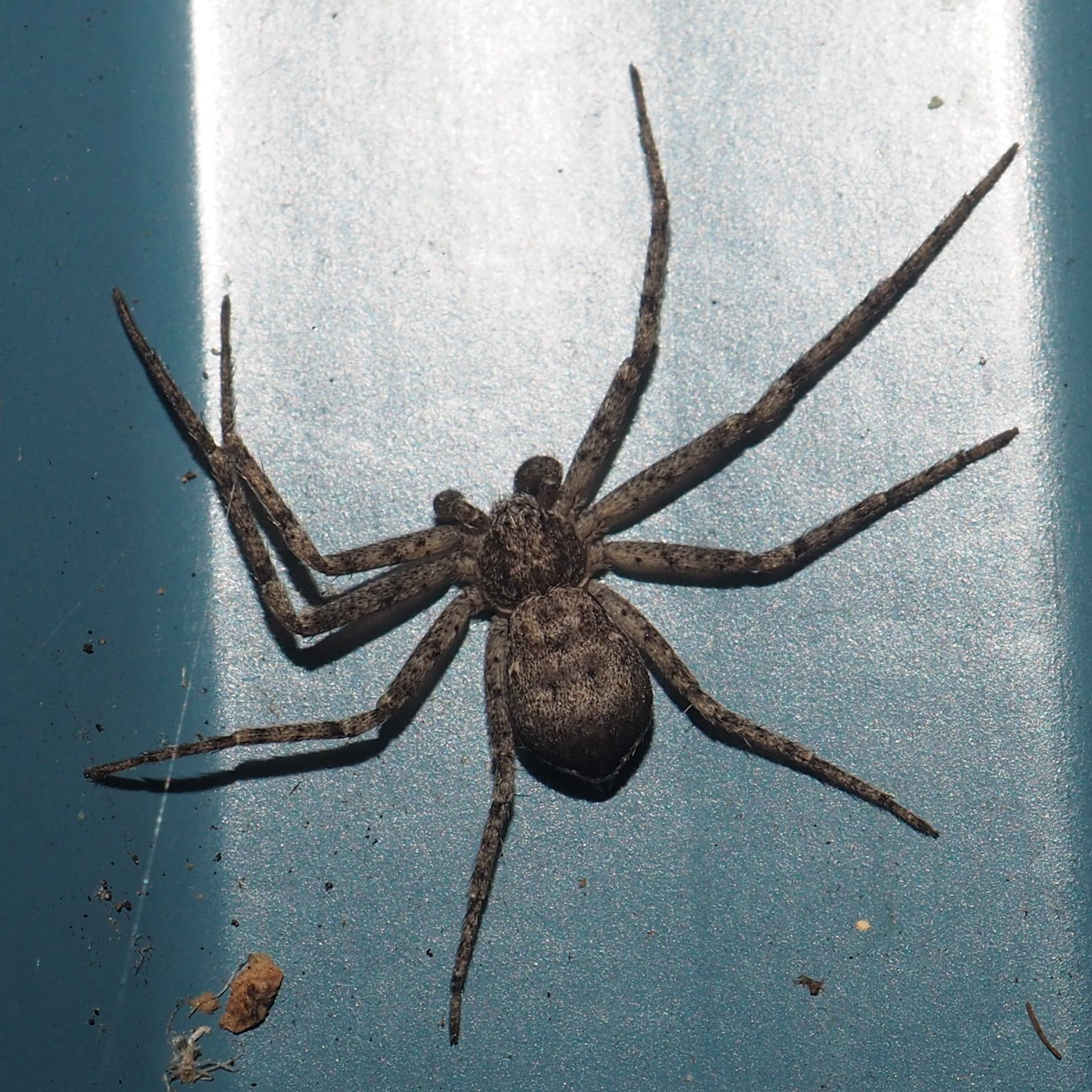
Here are some action scenes starring Spiders and their choice cuisine. The first one seems to have bagged one of those ever-present Graphopsocus cruciatus adults. The second is thinking "Ant! Yum!" I can't figure out what the third one is toting to the fridge. But there is going to be a feast tonight.
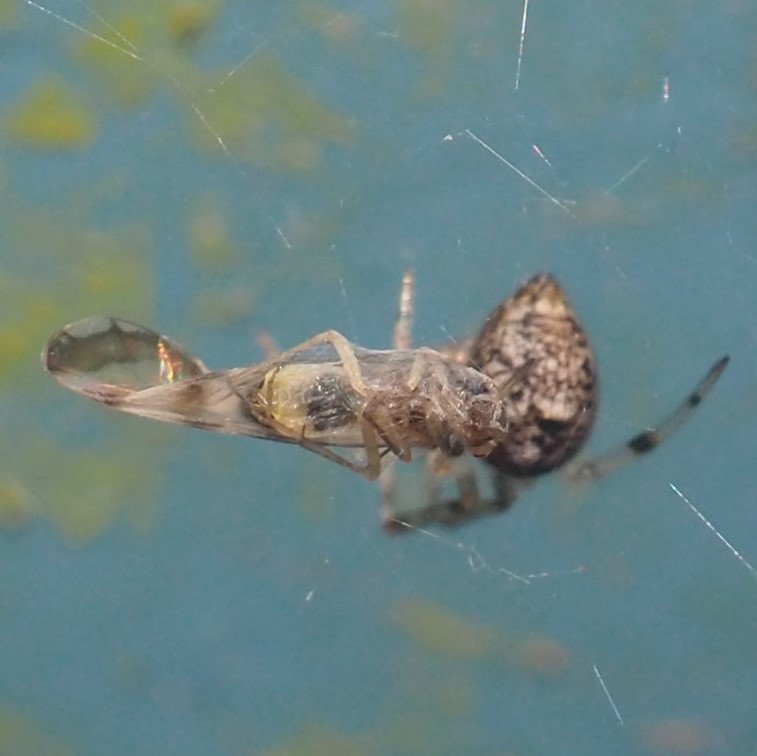

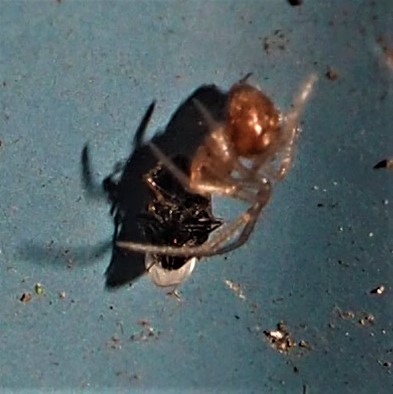
This one is deceptive. This kind of Spider, known as Cribellate, is capable of wrapping itself up in its legs so that at first you don't think Spider, at all. I have some old pictures of one unwrapping. I believe it is the same species. First you see the legs unwrapping from each other and then the whole Spider appears.
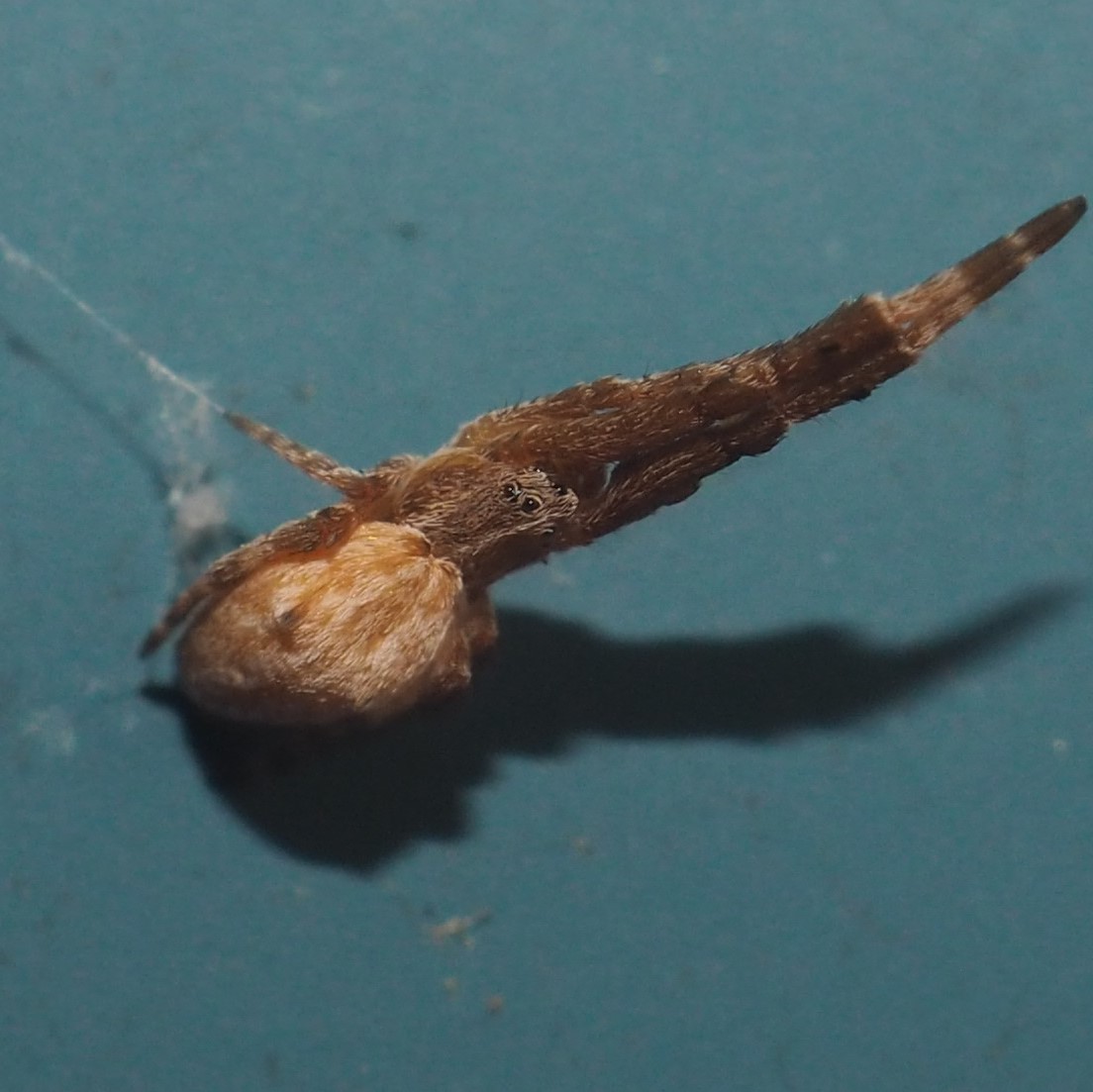
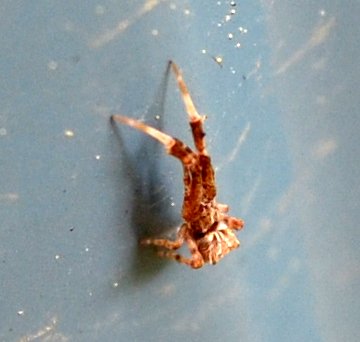
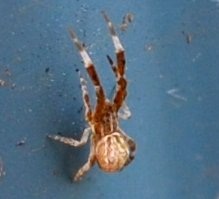
We have a very few Wasp sightings. Most of them were very small, but some had lovely iridescences. I'm sorry to say I don't know their names.
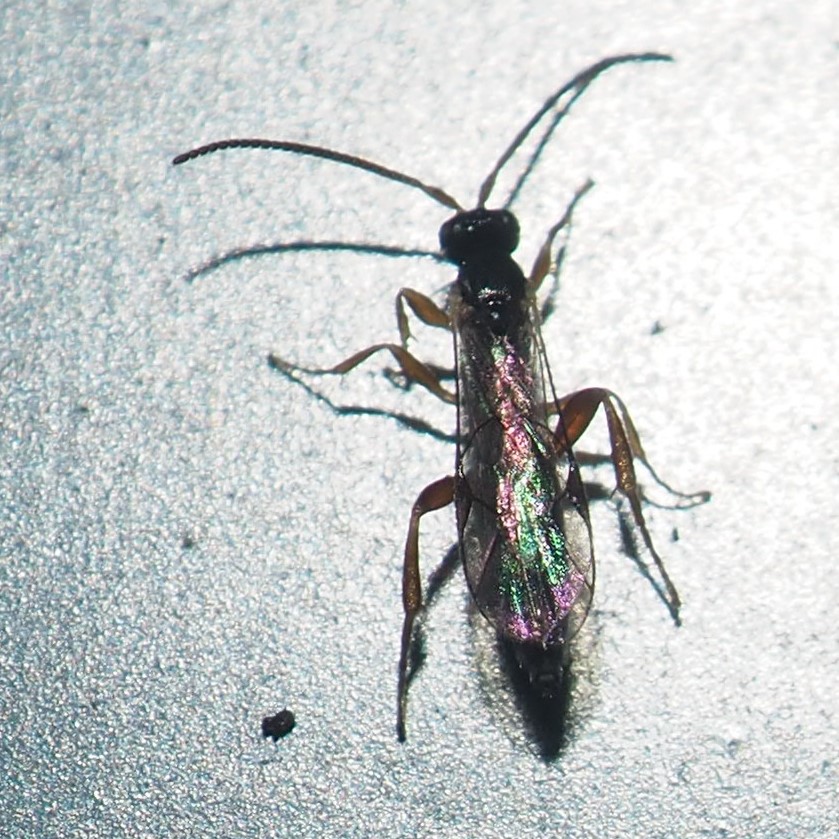

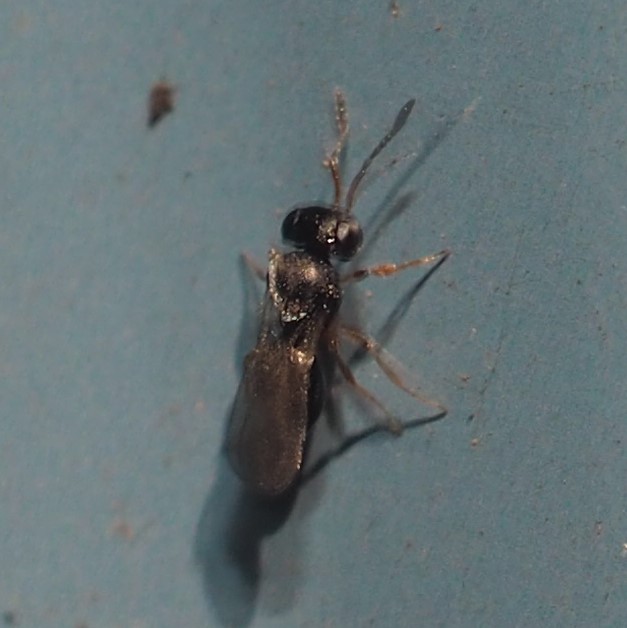
Here are a few creatures that seem to multiply in the fall. There are Pillbugs on almost every panel of the North wall. The wet Slug can easily convince you it has been raining on and off for a few days. Third is one you may or may not remember. I usually see them at the end of the winter, but here is a Springtail. Remember them? They're the creatures that have six legs but are NOT Insects.
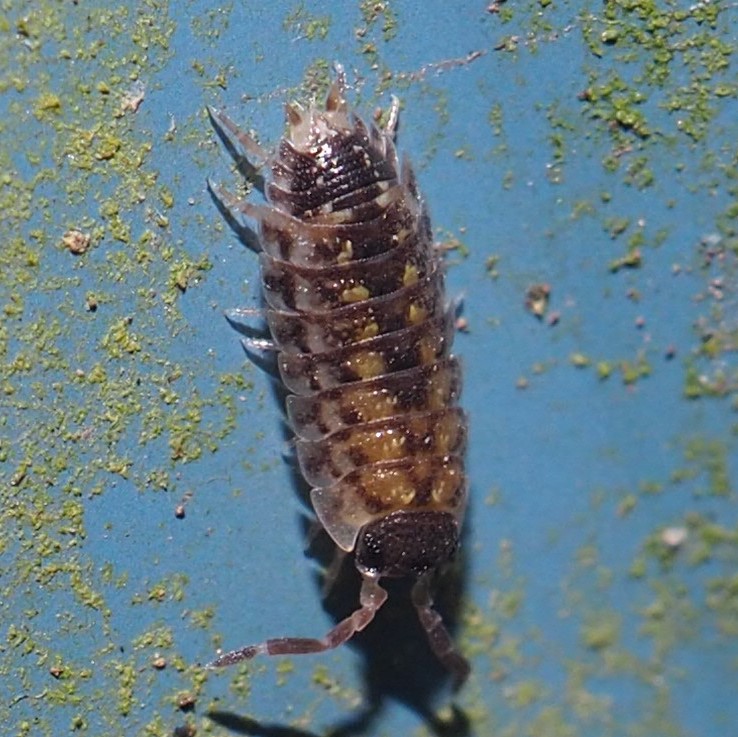
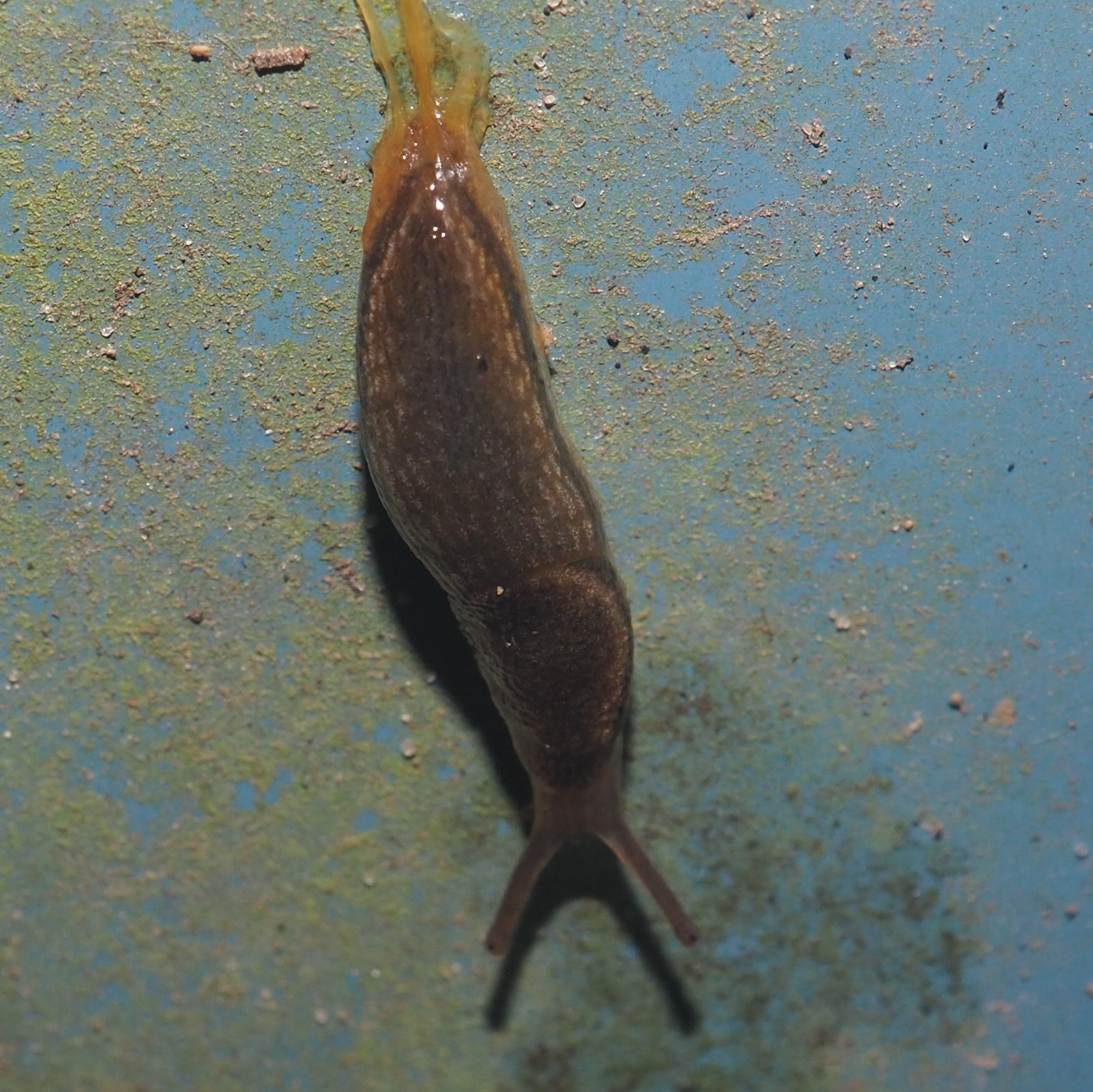

Let's wind back to the Pond. The chilling of the atmosphere is in conflict with the reaction of the Fishes when they catch a glimpse of me. Martha equals FOOD. But I'm not supposed to feed the Fishes unless the temperature is at least 55 F. So today when it hit 55F, I gave them about half of the usual amount and left them to eat peacefully. The other day I ordered a large net to spread over the water to catch the Redbud and Maple leaves as they do their Fall thing. Tomorrow I will try to spread it. I wonder what the frogs are going to do. Today I saw one of the larger ones but only that one out of three. I suppose they will want to go underwater for the winter. But my task will be to try to hold one portion of the net in such a way that Frogs can get underneath it. Anyway, you can already see that in this fish pic, the lily leaves have started turning yellow, but they will be able to go quietly to sleep. We may not get many more chances (maybe in two weeks, when we reach November, the fishes will stop moving much and so I may not be able to feed them and see their excited dance again until Spring.
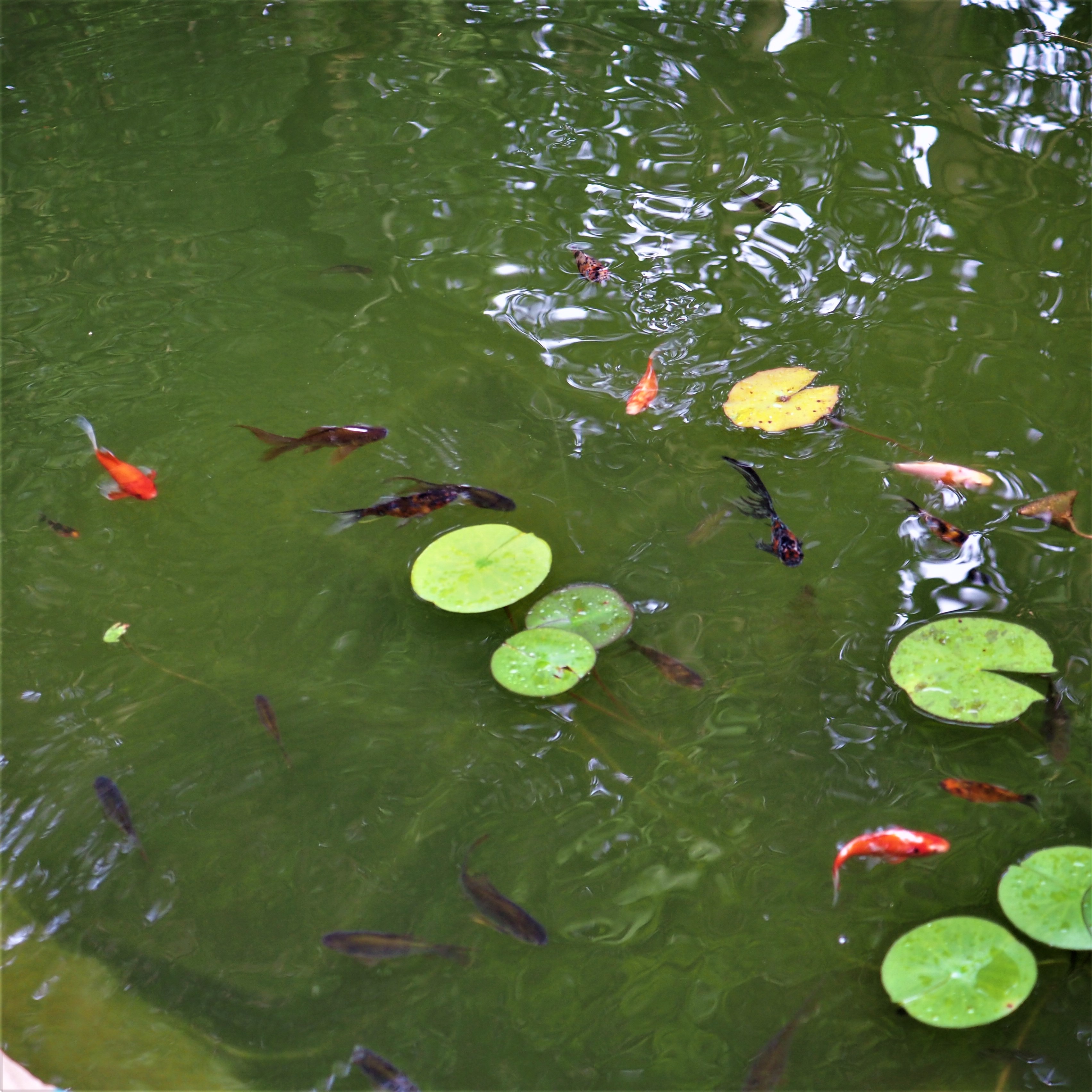

More Fishes.
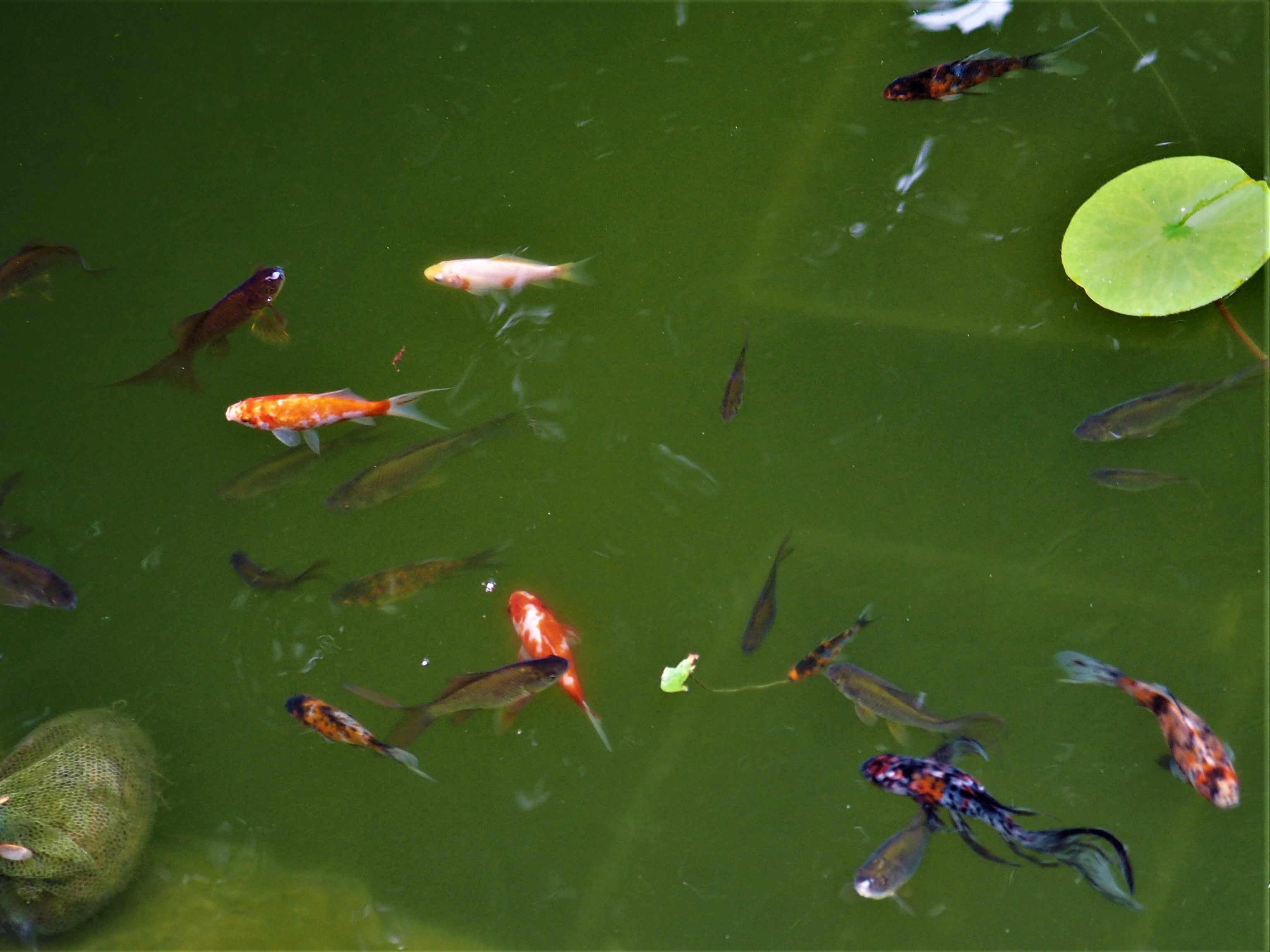
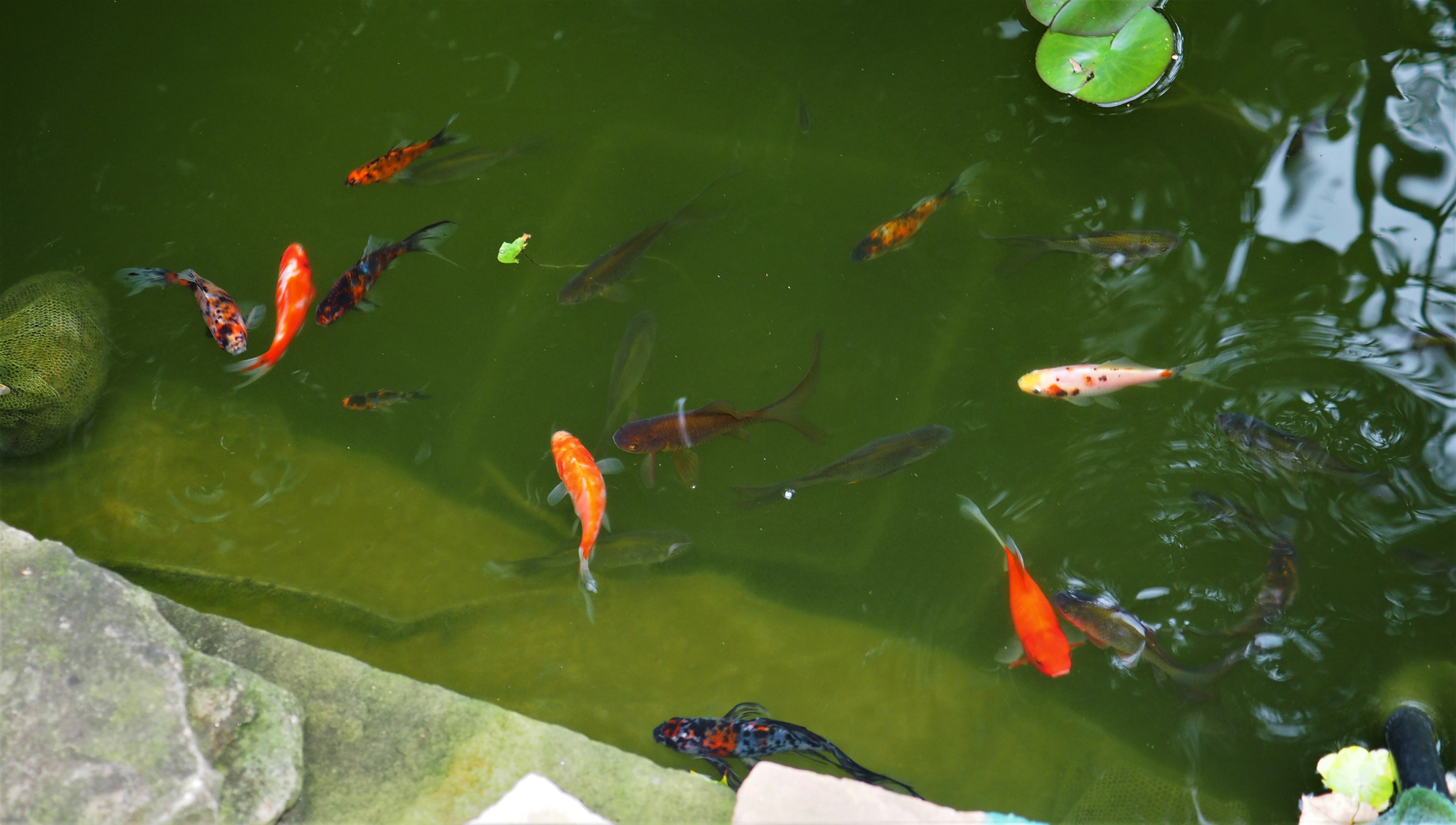
Now I have got to fulfill my promise to lay down the leaf net before any more leaves sink to the Pond bottom. I look forward to seeing you here next week.
Love, Martha
Back to October 10, 2021
Forward to October 24, 2021
Back to main menu
copyright Martha O'Kennon 2021























































































